
Deutsch-Chinesische Enzyklopädie, 德汉百科
 States of Europe
States of Europe
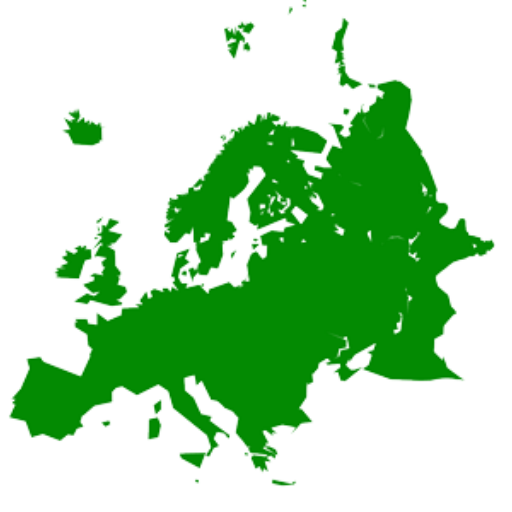
 Finland
Finland

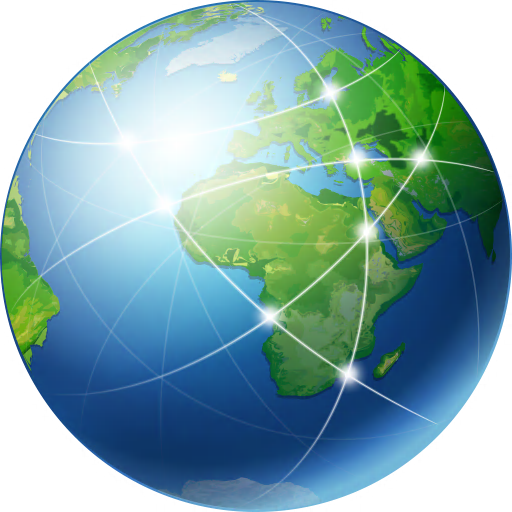 Geography
Geography

 Geography
Geography
 ***IMF Developed countries
***IMF Developed countries
 IMF Developed countries
IMF Developed countries
 IMF Developed countries
IMF Developed countries
 TOP5
TOP5

 States of Europe
States of Europe

芬兰共和国(芬兰语:Suomen tasavalta,瑞典语:Republiken Finland),通称“芬兰”(芬兰语:Suomi,瑞典语:Finland,![]() 双语发音 帮助·信息),是北欧国家,也是个双语国家,瑞典语和芬兰语平等成为芬兰官方语言。陆地上与瑞典、挪威和俄罗斯接壤,西南面被波罗的海环绕,东南部为芬兰湾,西面则为波的尼亚湾。芬兰是世界高度的发达国家和福利国家,国民享有极高标准的生活品质。联合国公布的《世界幸福感报告》中芬兰在2018至2020年连续三年排为世界上最幸福的国家[8][9][10]。
双语发音 帮助·信息),是北欧国家,也是个双语国家,瑞典语和芬兰语平等成为芬兰官方语言。陆地上与瑞典、挪威和俄罗斯接壤,西南面被波罗的海环绕,东南部为芬兰湾,西面则为波的尼亚湾。芬兰是世界高度的发达国家和福利国家,国民享有极高标准的生活品质。联合国公布的《世界幸福感报告》中芬兰在2018至2020年连续三年排为世界上最幸福的国家[8][9][10]。
Finnland (finnisch [ˈsuɔmi], schwedisch Finland [ˈfɪnland]), amtlich Republik Finnland (finnisch Suomen tasavalta, schwedisch Republiken Finland) ist eine parlamentarische Republik in Nordeuropa und seit 1995 Mitglied der Europäischen Union. Finnland grenzt an Schweden, Norwegen, Russland und die Ostsee.
Mit etwa 5,5 Millionen Einwohnern auf einer Fläche fast so groß wie Deutschland gehört Finnland zu den am dünnsten besiedelten Ländern Europas. Der Großteil der Bevölkerung lebt im Süden des Landes mit der Hauptstadt Helsinki sowie den Großstädten Espoo, Tampere, Vantaa und Turku. Die beiden Amtssprachen sind Finnisch und Schwedisch, wobei 88,7 % der Bevölkerung finnisch- und 5,3 % schwedischsprachig sind. Die schwedischsprachige Inselgruppe Åland hat einen weitreichenden Autonomiestatus.
Seit dem Ende der letzten Kaltzeit ist in Finnland Besiedlung nachweisbar. Ab der Völkerwanderungszeit kam Finnland über den sich ausweitenden Ostseehandel stärker in Kontakt mit dem übrigen Europa; im Hochmittelalter wurde es christianisiert. Über Jahrhunderte hinweg war Finnland integraler Teil Schwedens, bevor es im 18. Jahrhundert zunehmend in den Einflussbereich des expandierenden Russischen Kaiserreiches geriet und ihm 1809 als Großfürstentum Finnland eingegliedert wurde. Mit der Einführung des Frauenwahlrechts 1906 war Finnland das erste Land in Europa, in dem das aktive Frauenwahlrecht auf nationaler Ebene eingeführt wurde, und weltweit war es nach Neuseeland und Australien der dritte Staat. Beim passiven Wahlrecht ist Finnlands Spitzenstellung noch deutlicher: Erstmals weltweit wurden Frauen in ein Parlament gewählt.
Erst der Sturz des russischen Kaisers und die anschließende Oktoberrevolution 1917 ermöglichten Finnland die Loslösung von Russland. Am 6. Dezember 1917 wurde vom finnischen Parlament die Unabhängigkeit erklärt.
フィンランド共和国(フィンランドきょうわこく、フィンランド語: Suomen tasavalta、スウェーデン語: Republiken Finland)、通称フィンランドは、北ヨーロッパに位置する共和制国家。北欧諸国のひとつであり、西はスウェーデン、北はノルウェー、東はロシアと隣接し、南はフィンランド湾を挟んでエストニアが位置している。
首都ヘルシンキは露仏同盟以来、ロシアの主要都市であるサンクトペテルブルク方面へ西側諸国が投資や往来をするための前線基地となってきた。同じく直近の旧領ヴィボルグはサイマー運河の出口であったが、現在はロシア領で、ノルド・ストリームの経由地となっている。ロシアと欧州諸国の間にある地政学的な重要性から、たびたび勢力争いの舞台や戦場になってきた。
中立的外交の裏では、外交・安全保障やエネルギー政策を巡り東西の綱引きが行われている。国内には原子力発電所があり、オンカロ処分場が2020年に開設されれば世界初の使用済み核燃料の最終処分場となる。情報産業も政治と関係しており、公職経歴者が民間企業の幹部になる例として、エスコ・アホという首相経験者がノキア取締役を務めているようなことがある。
人口や経済規模は小さいが、一人当たりGDPなどを見ると豊かで自由な民主主義国として知られている。フィンランドは2014年のOECDレビューにおいて「世界でもっとも競争的であり、かつ市民は人生に満足している国のひとつである」と報告された[1]。フィンランドは収入、雇用と所得、住居、ワークライフバランス、保健状態、教育と技能、社会的結びつき、市民契約、環境の質、個人の安全、主観的幸福の各評価において、すべての点でOECD加盟国平均を上回っている[1]。
Finland (Finnish: Suomi [ˈsuo̯mi] (![]() listen); Swedish: Finland [ˈfɪ̌nland] (
listen); Swedish: Finland [ˈfɪ̌nland] (![]() listen), Finland Swedish: [ˈfinlɑnd]), officially the Republic of Finland (Finnish: Suomen tasavalta, Swedish: Republiken Finland (
listen), Finland Swedish: [ˈfinlɑnd]), officially the Republic of Finland (Finnish: Suomen tasavalta, Swedish: Republiken Finland (![]() listen to all)),[note 1] is a Nordic country in Northern Europe bordering the Baltic Sea, Gulf of Bothnia, and Gulf of Finland, between Sweden to the west, Russia to the east, Estonia to the south, and north-eastern Norway to the north. The capital and largest city is Helsinki. Other major cities are Espoo, Tampere, Vantaa, Oulu, Turku, Jyväskylä, Lahti and Kuopio.
listen to all)),[note 1] is a Nordic country in Northern Europe bordering the Baltic Sea, Gulf of Bothnia, and Gulf of Finland, between Sweden to the west, Russia to the east, Estonia to the south, and north-eastern Norway to the north. The capital and largest city is Helsinki. Other major cities are Espoo, Tampere, Vantaa, Oulu, Turku, Jyväskylä, Lahti and Kuopio.
Finland's population is 5.53 million as of March 2020,[7] the majority of whom live in the central and south of the country and speak Finnish, a Finnic language from the Uralic language family, unrelated to the Scandinavian languages.[8] Finland is the eighth-largest country in Europe and the most sparsely populated country in the European Union. It is a parliamentary republic of 310 municipalities,[9] and includes an autonomous region, the Åland Islands. Over 1.4 million people live in the Greater Helsinki metropolitan area, which produces one third of the country's GDP. Swedish is the second official language of Finland, which is mainly spoken in certain coastal areas and on Åland. A large majority of Finns are members of the Evangelical Lutheran Church.[10]
Finland was inhabited when the last ice age ended, approximately 9000 BC.[11] Comb Ceramic culture introduced pottery 5200 BC and Corded Ware culture coincided with the start of agriculture between 3000 and 2500 BC. The Bronze Age and Iron Age were characterised by extensive contacts with other cultures in the Fennoscandian and Baltic regions. At the time Finland had three main cultural areas – Southwest Finland, Tavastia and Karelia.[12] From the late 13th century, Finland gradually became an integral part of Sweden through the Northern Crusades and the Swedish part-colonisation of coastal Finland, a legacy reflected in the prevalence of the Swedish language and its official status.
In 1809, Finland was incorporated into the Russian Empire as the autonomous Grand Duchy of Finland. In 1906, Finland became the first European state to grant all adult citizens the right to vote, and the first in the world to give all adult citizens the right to run for public office.[13][14] Following the 1917 Russian Revolution, Finland declared itself independent. In 1918, the fledgling state was divided by civil war, with the Bolshevik-leaning Red Guard, supported by Soviet Russia, fighting the White Guard, supported by the German Empire. After a brief attempt to establish a kingdom, the country became a republic. During World War II, Finland fought the Soviet Union in the Winter War and the Continuation War and lost some land, but maintained independence.
Finland remained largely an agrarian country until the 1950s. After World War II, the war reparations demanded by the Soviet Union forced Finland to industrialise. The country rapidly developed an advanced economy while building an extensive welfare state based on the Nordic model, resulting in widespread prosperity and a high per capita income.[15] Finland is a top performer in numerous metrics of national performance, including education, economic competitiveness, civil liberties, quality of life, and human development.[16][17][18][19] In 2015, Finland was ranked first in the World Human Capital[20] and the Press Freedom Index and as the most stable country in the world during 2011–2016 in the Fragile States Index,[21] and second in the Global Gender Gap Report.[22] It also ranked first on the World Happiness Report report for 2018 and 2019.[23]
Finland joined the United Nations in 1955 and adopted an official policy of neutrality. The Finno-Soviet Treaty of 1948 gave the Soviet Union some leverage in Finnish domestic politics during the Cold War. Finland joined the OECD in 1969, the NATO Partnership for Peace in 1994,[24] the European Union in 1995, the Euro-Atlantic Partnership Council in 1997,[24] and the Eurozone at its inception in 1999.
La Finlande (en finnois : Suomi Prononciation ; en suédois : Finland), en forme longue la république de Finlande (en finnois : Suomen tasavalta ; en suédois : Republiken Finland), est un pays d'Europe du Nord, membre de l'Union européenne depuis 1995.
La Finlande est baignée par la mer Baltique, plus précisément par le golfe de Finlande au sud et par le golfe de Botnie à l'ouest et au sud-ouest. Son territoire s'étend de part et d'autre du cercle arctique dans la partie orientale de la Fennoscandie, ce qui fait d'elle un pays nordique entièrement extérieur à la Scandinavie. Composé de plus de 3 000 lacs et d'innombrables îles, parmi lesquelles celles de l'archipel autonome d'Åland, il occupe une superficie totale de 338 145 km2 entre la Norvège au nord, la Russie à l'est et la Suède au nord-nord-ouest, ce qui en fait un des plus vastes pays de l'Union européenne.
Cet espace géographique soumis à un climat rigoureux pendant l'hiver est majoritairement une zone de taïga. Les 5,3 millions d'habitants que recense la démographie nationale confèrent au pays l'une des plus faibles densités de population de toute l'Union européenne. Principalement installés dans le Sud du pays, en particulier sur la côte méridionale, où se trouve la capitale, Helsinki, mais aussi les autres municipalités les plus peuplées, à savoir Espoo et Vantaa, qui sont regroupées au sein de la Région capitale ou Grand Helsinki, les Finlandais disposent de deux langues officielles, le finnois et le suédois.
Enrichie par les apports ancestraux d'une mythologie féconde, par les Samis, ou encore par les populations autochtones de la province septentrionale de Laponie, et bien qu'elle se soit clairement occidentalisée dans la seconde moitié du XXe siècle à la suite d'une reconversion réussie de son économie (centrée sur la sylviculture, puis la métallurgie, et enfin l'électronique), la culture nationale plébiscite toujours un certain dépouillement matériel, dont le sisu et le sauna sont des symboles sûrs, ainsi qu'une culture du silence.
Longtemps sous domination du voisin suédois, sous le règne duquel fut fondée la première capitale, Turku, la Finlande demeure marquée par les nombreux conflits qui l'ont opposée durant toute son histoire récente à la Russie, puissance impérialiste dont elle est devenue un grand-duché autonome en 1809, et dont elle n'a obtenu son indépendance qu'en 1917. L'année suivante, une guerre civile ensanglante le pays, suivie de deux guerres contre l'URSS pendant la Seconde Guerre mondiale, et enfin, d'une longue tutelle soviétique indirecte durant la guerre froide, connue sous le nom de « finlandisation ».
Ces soubresauts n'ont cependant pas empêché l'établissement d'une république stable dont les réalisations sont souvent présentées en modèles, et ce en de nombreux domaines, notamment environnement et qualité de vie. La politique nationale s'articule autour d'un président de la République, Sauli Niinistö, d'un parlement unicaméral, l'Eduskunta et d'un gouvernement dirigé par la Première ministre, actuellement Sanna Marin. Le Grand-duché de Finlande, alors composante de l'Empire russe, a été le premier État en Europe à accorder le droit de vote aux femmes ainsi que le premier au monde à les rendre éligibles au même titre que les hommes. En 2009, l'étude Legatum Prosperity classe la Finlande en première position à la suite de ses performances économiques et de la qualité de vie4.
La Finlande connaît une forte période de récession à la fin des années 2000, en partie liée à l’affaiblissement de son industrie électronique (comme la chute de Nokia), la récession de son voisin russe et une crise dans l'industrie forestière. L'économie du pays se redresse néanmoins au milieu des années 2010.
La Finlandia (in finlandese: , in svedese: ), ufficialmente Repubblica di Finlandia (in finlandese: Suomen tasavalta e in svedese: Republiken Finland)[7], è un paese dell'Europa del nord, facente parte della regione nota come Fennoscandia e della penisola scandinava. Confina con la Svezia a ovest, la Norvegia a nord e la Russia ad est. Si affaccia a sud sul golfo di Finlandia, sulla cui sponda meridionale si trova l'Estonia. È uno Stato facente parte dell'Unione europea.
In Finlandia vivono 5,5 milioni di persone, per la maggior parte concentrate nelle regioni meridionali. In termini di superficie, è l'ottavo stato più grande d'Europa e lo stato con più bassa densità di popolazione nell'Unione europea. Politicamente, è una repubblica parlamentare con un governo centrale con sede nella capitale Helsinki, i governi locali in 336 comuni e una regione autonoma, le isole Åland. Circa un milione di abitanti vive nella zona della conurbazione di Helsinki (composta da Helsinki, Espoo, Kauniainen e Vantaa) e un terzo del prodotto interno lordo del paese è prodotto lì. Altre grandi città sono Tampere, Turku, Oulu, Jyväskylä, Lahti e Kuopio.
La Finlandia fece parte del Regno di Svezia dal XII secolo al 1809, quando divenne un granducato autonomo all'interno dell'Impero Russo fino alla rivoluzione del 1917. Il 6 dicembre di quell'anno la Finlandia ottenne l'indipendenza, seguita da una guerra civile terminata con la sconfitta dei "Rossi" filo-bolscevichi da parte dei filo-conservatori "Bianchi" sostenuti dall'Impero tedesco. Dopo un breve tentativo di stabilire una monarchia nello stato, la Finlandia divenne una repubblica.
L'esperienza finlandese della Seconda guerra mondiale ha coinvolto tre conflitti separati: la Guerra d'inverno (1939-1940) e la Guerra di continuazione (1941-1944) contro l'Unione Sovietica, e la Guerra di Lapponia (1944-1945) contro la Germania nazista. Dopo la fine della guerra, la Finlandia ha aderito all'Organizzazione delle Nazioni Unite (ONU) nel 1955, all'Organizzazione per la cooperazione e lo sviluppo economico (OCSE) nel 1969, all'Unione europea nel 1995 e alla zona Euro fin dal suo inizio nel 1999. Durante questo tempo, ha costruito uno stato sociale vasto in stile nordico.
La Finlandia era in ritardo rispetto all'industrializzazione, rimanendo uno stato in gran parte agricolo fino al luglio del 1949. Successivamente, lo sviluppo economico è stato rapido, tale che con un reddito pro-capite nominale di oltre 49 000 dollari statunitensi, la Finlandia è uno degli stati più ricchi del mondo. Secondo alcune misure, la Finlandia ha il miglior sistema educativo in Europa ed è stata classificata come uno degli stati più pacifici ed economicamente competitivi del mondo. È stata anche classificata come uno degli stati al mondo con la più alta qualità della vita. Secondo la rivista Newsweek la Finlandia è "il miglior stato del mondo".[8]
Finlandia, oficialmente República de Finlandia (en finés: ![]() Suomi (?·i) o Suomen Tasavalta; en sueco: Finland o Republiken Finland), es un país miembro de la Unión Europea desde 1995 y situado en el noreste de Europa. Tiene fronteras al oeste con Suecia, al este con Rusia y al norte con Noruega. Por el oeste y el sur está rodeada por el mar Báltico, que la separa de Suecia y Estonia, cruzando los golfos de Botnia y Finlandia, respectivamente. La capital y ciudad más importante del país es Helsinki.
Suomi (?·i) o Suomen Tasavalta; en sueco: Finland o Republiken Finland), es un país miembro de la Unión Europea desde 1995 y situado en el noreste de Europa. Tiene fronteras al oeste con Suecia, al este con Rusia y al norte con Noruega. Por el oeste y el sur está rodeada por el mar Báltico, que la separa de Suecia y Estonia, cruzando los golfos de Botnia y Finlandia, respectivamente. La capital y ciudad más importante del país es Helsinki.
En 2017, Finlandia contaba con una población de 5,5 millones de habitantes en un área de 338 145 km².3 La gran mayoría de la población del país se concentra en el extremo sur, en la costa del golfo de Finlandia y sus alrededores (incluyendo el Área Metropolitana de Helsinki). Finlandia es el sexto país más extenso de Europa y cuenta con una densidad poblacional baja de 16 habitantes por km², lo que le convierte en el menos densamente poblado de la Unión Europea. La mayoría de los finlandeses hablan finés (o finlandés) como su lengua materna, la cual es una de las pocas lenguas oficiales de la Unión Europea que no descienden de la familia indoeuropea. La segunda lengua oficial de Finlandia es el sueco, hablado como lengua materna por el 5,6% de la población.4
Finlandia fue parte de Suecia hasta que en 1809 fue anexionada por el Imperio ruso, pasando a ser el gran ducado de Finlandia (entidad autónoma de Rusia hasta 1917, cuando obtuvo la independencia). Actualmente, Finlandia es una república parlamentaria y democrática, y es miembro de las Naciones Unidas desde 1955, así como de la Unión Europea desde 1995. La economía finlandesa es una de las más prósperas de Europa, basándose en los importantes sectores de servicios, así como de manufactura. En el país existe un estado del bienestar, así como una política altamente democrática y con niveles sumamente bajos de corrupción.
Финля́ндия (фин. Suomi, швед. Finland, произношение на обоих языках ; официально — Финля́ндская Респу́блика, фин. Suomen tasavalta, швед. Republiken Finland[5]) — государство в Северной Европе.
Население (оценка 2017 года) — 5 560 000 человек, площадь территории — 338 430,53 км². Занимает 114-е место по количеству населения и 64-е по территории в мире.
Столица и крупнейший город — Хельсинки.
Государственные языки — финский и шведский. Частота использования жителями Финляндии того или иного государственного языка варьируется на разных территориях (например, на Аландских островах в качестве официального языка используется лишь шведский, а на севере страны и вовсе преобладают саамские языки).
Парламентская республика. С 5 февраля 2012 года пост президента занимает Саули Нийнистё.
С 6 декабря 1917 года является независимым государством (2017 год объявлен годом празднования 100-летия независимости страны). Финляндия является членом Северного паспортного союза (с 1952), Организации Объединённых Наций (с 1955), Северного совета (с 1956), Европейского союза (с 1995) и Шенгенского соглашения (с 1996).
Граничит на востоке с Россией, на северо-западе — со Швецией и на севере — с Норвегией. На юге и западе берега страны омывают воды Балтийского моря и его заливов — Финского и Ботнического. Имеются морские границы с Эстонией.
Во «Всемирном докладе о счастье 2018», опубликованном ООН, Финляндия заняла первое место[6]. В 2010 году страна была на первом месте в списке «Лучшие страны мира» (англ. The world's best countries) по версии журнала Newsweek[7], а также является третьей в рейтинге равноправия полов[8]. С 2011 по 2014 годы американский фонд «Fund for Peace» оценивал Финляндию как «самую стабильную страну мира»[9][10].
格鲁吉亚(格鲁吉亚语:საქართველო,ISO 9984:Sakartvelo,IPA:[sɑkʰɑrtʰvɛlɔ] (![]() 聆听))为跨洲国家,地跨欧亚两洲,但因文化上深受欧洲影响,故也被认为是欧洲国家[4][5][6][7]。它曾经是苏联加盟共和国,1991年4月9日正式独立,首任总统兹维亚德·加姆萨胡尔季阿。独立后法定国名为“格鲁吉亚共和国”,1995年8月24日该国通过新宪法,国名定为“格鲁吉亚”,曾为独立国家联合体成员。因为2008年南奥塞梯战争,格鲁吉亚根据议会2008年8月14日通过的决议做出退出独联体的决定,并于2009年8月18日完成手续,正式退出。[8]
聆听))为跨洲国家,地跨欧亚两洲,但因文化上深受欧洲影响,故也被认为是欧洲国家[4][5][6][7]。它曾经是苏联加盟共和国,1991年4月9日正式独立,首任总统兹维亚德·加姆萨胡尔季阿。独立后法定国名为“格鲁吉亚共和国”,1995年8月24日该国通过新宪法,国名定为“格鲁吉亚”,曾为独立国家联合体成员。因为2008年南奥塞梯战争,格鲁吉亚根据议会2008年8月14日通过的决议做出退出独联体的决定,并于2009年8月18日完成手续,正式退出。[8]
格鲁吉亚领土面积达69,700平方公里(包括阿布哈兹和南奥塞梯)[9];人口数量有4,352,224(2011年人口统计);主要民族为格鲁吉亚族(70.1%),其他主要少数民族有亚美尼亚族、俄罗斯族和阿塞拜疆族等;官方语言为格鲁吉亚语,当地居民亦多通晓俄语;多数人信仰东正教,少数信仰伊斯兰教。
格鲁吉亚位于地区的黑海沿岸,北邻俄罗斯,南部与土耳其、亚美尼亚、阿塞拜疆接壤。格鲁吉亚是苏联领导人斯大林的故乡,现在格鲁吉亚政治上倾向于欧盟和西方国家,甚至与俄罗斯爆发战争并断交,其最终目标是加入欧盟。
Georgien ([geˈɔrgi̯ən], georgisch საქართველო, Sakartwelo, IPA: [sɑkʰɑrtʰvɛlɔ] ), nach der russischen Bezeichnung Грузия (Grusija) früher gelegentlich auch Grusien oder Grusinien genannt, ist ein eurasischer Staat im Südkaukasus, östlich des Schwarzen Meeres und südlich des Großen Kaukasus gelegen. Im Norden wird er von Russland, im Süden von der Türkei und Armenien, im Osten von Aserbaidschan begrenzt. Die Landesteile Abchasien und Südossetien sind abtrünnig (abgefallen) und werden nur von Russland und einigen weiteren Staaten als souverän anerkannt.
Mit rund 3,7 Millionen Einwohnern (2019) auf einer Fläche von 57.215 km² (ohne die abtrünnigen Landesteile) ist Georgien eher dünn besiedelt. Mehr als ein Viertel der Bevölkerung lebt in der Hauptstadtregion um Tiflis, weitere große Städte sind Batumi, Kutaissi und Rustawi.
ジョージア(グルジア語: საქართველო, ラテン文字転写: sakartvelo, 英語: Georgia)は、南コーカサスにある共和制国家。首都はトビリシ。東ヨーロッパ[3][4][5]、もしくは西アジアに区分される[5][6]。北側にロシア、南側にトルコ、アルメニア、アゼルバイジャンと隣接する。
日本では2015年4月まで国名呼称にグルジア(ロシア語: Грузия, Gruziya)を使用していた。
Georgia (Georgian: საქართველო, Sakartvelo; IPA: [sɑkʰɑrtʰvɛlɔ] (![]() listen)) is a country located at the intersection of Eastern Europe and Western Asia. It is a part of the Caucasus region, bounded to the west by the Black Sea, to the north and east by Russia, to the south by Turkey and Armenia, and to the southeast by Azerbaijan. It covers 69,700 square kilometres (26,911 sq mi), and has a population of around 4 million.[11] Georgia is a representative democracy governed as a unitary parliamentary republic.[11] Tbilisi is the capital and largest city, home to roughly a quarter of the population.
listen)) is a country located at the intersection of Eastern Europe and Western Asia. It is a part of the Caucasus region, bounded to the west by the Black Sea, to the north and east by Russia, to the south by Turkey and Armenia, and to the southeast by Azerbaijan. It covers 69,700 square kilometres (26,911 sq mi), and has a population of around 4 million.[11] Georgia is a representative democracy governed as a unitary parliamentary republic.[11] Tbilisi is the capital and largest city, home to roughly a quarter of the population.
During the classical era, several independent kingdoms became established in what is now Georgia, such as Colchis and Iberia. Georgians officially adopted Christianity in the early fourth century, which contributed to the spiritual and political unification of early Georgian states. In the Middle Ages, the unified Kingdom of Georgia emerged and reached its Golden Age during the reign of King David the Builder and Queen Tamar the Great in the 12th and early 13th centuries. Thereafter, the kingdom declined and eventually disintegrated under the hegemony of various regional powers, including the Mongols, the Ottoman Empire and successive dynasties of Persia. In 1783, one of the Georgian kingdoms entered an alliance with the Russian Empire, which proceeded to annex the territory of modern Georgia in a piecemeal fashion throughout the 19th century.
After the Russian Revolution in 1917, Georgia emerged as an independent republic under German protection.[12] Following World War I, Georgia was forcibly annexed by the Soviet Union in 1922, becoming one of its fifteen constituent republics. By the 1980s, an independence movement emerged and grew quickly, leading to Georgia's secession from the Soviet Union in April 1991. For most of the subsequent decade, post-Soviet Georgia suffered from economic crisis, political instability, ethnic conflict, and secessionist wars in Abkhazia and South Ossetia. Following the bloodless Rose Revolution in 2003, Georgia strongly pursued a pro-Western foreign policy; it introduced a series of democratic and economic reforms aimed at integration into the European Union and NATO. The country's Western orientation soon led to worsening relations with Russia, at one point even resulting in a brief war in 2008.
Georgia is a developing country with "very high" Human Development, high levels of economic freedom and ease of doing business, as well as relatively low corruption indicators, although poverty and unemployment remain a challenge.[13] It is one of the first countries in the world to legalize cannabis, becoming the only former-communist state in the world to do so. The country is a member of international organizations across both Europe and Asia, such as Council of Europe, Organization of the Black Sea Economic Cooperation, OSCE, Eurocontrol, European Bank for Reconstruction and Development, and GUAM.
La Géorgie (en géorgien : საქართველო, translittéré en SakartveloÉcouter), en forme longue depuis 1995 la république de Géorgie, est un pays sur la côte est de la mer Noire dans le Caucase, situé à la fois en Europe de l'Est et en Asie de l'Ouest2,5,6. Elle est considérée comme faisant culturellement, historiquement et politiquement parlant partie de l'Europe7,8,9. Le pays est membre du Conseil de l'Europe, de l'OSCE, de Eurocontrol, de la Coopération économique de la mer Noire et de l'Alliance GUAM. Elle espère devenir un jour membre de l'OTAN et de l'Union européenne avec laquelle un accord d'association a été conclu en 201410.
L'histoire de la Géorgie remonte aux royaumes antiques de Colchide et d'Ibérie, qui furent ensuite unifiés. La Géorgie est l'une des premières nations à avoir adopté la religion chrétienne comme religion officielle, au début du IVe siècle : elle a rejoint l'orthodoxie après le schisme de 1054. Elle connaît son âge d'or au XIIe siècle, sous le règne de Tamar Ire. Confrontée tour à tour aux Romains, Perses, Mongols, Byzantins, et Ottomans11, la Géorgie est annexée au début du XIXe siècle par la Russie impériale sous Paul Ier, mais retrouve son indépendance de 1918 à 1921 et devient un protectorat allemand. Elle est ensuite intégrée en tant que république au sein de l'Union soviétique.
L'indépendance de la Géorgie est une nouvelle fois restaurée en 1991. Le pays accumule difficultés économiques et guerres de sécession ; l'Adjarie redevient totalement géorgienne en 2004, par contre l'Abkhazie et l'Ossétie du Sud proclament unilatéralement leur indépendance avec le soutien direct de la Russie après les combats des années 1990 et la deuxième guerre d'Ossétie du Sud en 2008. La Révolution des Roses, en 2004, pacifique, et l'alternance démocratique, en 2012, non moins pacifique, ont conduit le pays sur le chemin de la démocratie.
Le pays couvre un territoire de 69 700 km2 dont 12 560 km2, soit environ 18 %3, échappent à l’administration géorgienne. La Georgie possède des frontières avec la Russie au nord et nord-est, l'Arménie et la Turquie au sud, et l'Azerbaïdjan au sud-est. La population est de 3,7 millions d'habitants selon le recensement de novembre 2014.
La Georgia (in georgiano: საქართველო?, Sakartvelo; in russo: Грузия?, Gruzija) è uno Stato sulle rive del Mar Nero, situato su una[6] delle linee convenzionali di demarcazione che separano l'Europa dall'Asia[7][8][9]. Dal punto di vista geografico è considerato appartenente all'Asia[10] o anche un paese transcontinentale, mentre, dal punto di vista storico-culturale è spesso considerato appartenente all'Europa orientale.[8][11][12][13]
La Georgia fa parte del Consiglio d'Europa, dell'OSCE, di Eurocontrol, della Banca Europea per la Ricostruzione e lo Sviluppo, e del GUAM ed è compresa nel piano d'azione per l'adesione alla NATO.
Parte dell'impero russo dal 1801 fino alla rivoluzione del 1917, per buona parte del XX secolo fu una repubblica dell'Unione Sovietica; nel corso del 1991 proclamò la propria indipendenza che divenne formalmente riconosciuta il 25 dicembre di quello stesso anno.
Confina a nord e a nord-est con la Russia, a sud con la Turchia e l'Armenia, a sud-est con l'Azerbaigian, e a ovest col Mar Nero. Ha una popolazione di 3 716 858 abitanti e la sua capitale è Tbilisi[14].
Georgia (en georgiano, საქართველო, transliterado Sakartvelo) es un país soberano localizado en la costa del mar Negro,4en el límite entre Europa Oriental y Asia Occidental. Geográficamente su territorio ha sido clasificado como euroasiático o como bicontinental56 dependiendo de la correspondiente convención, aunque cultural, histórica y políticamente, Georgia se considera como parte de Europa.78910 Como RSS de Georgia, hasta 1991, formó parte de la Unión de Repúblicas Socialistas Soviéticas (URSS).11 Comparte fronteras con Rusia al norte y noreste, con Turquía y Armenia al sur, y con Azerbaiyán al sudeste.12 La capital es Tiflis (en georgiano: თბილისი, Tbilisi),12 aunque desde 2012 el Parlamento tiene su sede en la ciudad de Kutaisi.13
La Constitución de Georgia es la de una democracia representativa, organizada como un Estado unitario, República semipresidencialista. Georgia es actualmente miembro de las Naciones Unidas, el Consejo de Europa, la Organización Europea para la Seguridad de la Navegación Aérea (Eurocontrol), la Organización Mundial del Comercio, la Cooperación Económica del Mar Negro, la Organización para la Seguridad y la Cooperación en Europa, la Comunidad de Opción Democrática, y la GUAM. El país aspira a unirse a la Unión Europea y a la OTAN; en julio de 2016 la Unión Europea incorporó a Georgia como estado asociado.14
La historia de Georgia se remonta a los antiguos reinos de Cólquida e Iberia. Georgia llegó a la cima de su fuerza política y económica durante el reinado de David IV y la reina Tamar, en los siglos XI y XII. A principios del siglo XIX, Georgia fue anexionada por el Imperio ruso. Después de un breve período de independencia tras la revolución rusa de 1917, Georgia fue anexionada por la Rusia soviética en 1921. Desde 1922 hasta 1991 la República Socialista Soviética de Georgia fue una de las quince repúblicas federales de la Unión Soviética. El 9 de abril de 1991, poco antes del colapso de la Unión Soviética, Georgia declaró su independencia. Al igual que muchos países postcomunistas, Georgia sufrió los disturbios civiles y la crisis económica de la mayor parte de la década de 1990, pero a través de Revolución de las Rosas de 2003 el nuevo gobierno introdujo reformas democráticas y económicas.
Гру́зия (груз. საქართველო [sɑkʰɑrtʰvɛlɔ], Сакартве́ло) — государство, расположенное в западной части Закавказья на восточном побережье Чёрного моря[9][10][11][12]. Относится к Передней Азии; рассматривается часто как страна на стыке Европы и Азии, иногда — как часть современной Европы[* 7].
Население, по итогам официальной переписи 2014 года, составляет 3 713 804 человека[5][* 6] (по оценочным данным на начало 2021 года — 3 728 573 человека[4][* 6]), территория — 69 700[* 8] км². Занимает 131-е место в мире по численности населения и 119-е по территории.
Столица — Тбилиси. Государственный язык — грузинский.
Грузия — унитарное государство с парламентской формой правления. 16 декабря 2018 года пост президента Грузии заняла Саломе Зурабишвили, премьер-министром с 22 февраля 2021 года является Ираклий Гарибашвили.
Согласно Конституции, в состав Грузии входят 2 автономные республики, 9 краёв и приравненный к ним столичный город.
Грузия омывается водами Чёрного моря на западе; граничит с Россией на востоке и севере, Арменией и Турцией на юге и Азербайджаном на юго-востоке. Территории Абхазии и Цхинвальского региона де-факто не управляются грузинским правительством и расцениваются им, Парламентской Ассамблеей ОБСЕ, США и Европейской комиссией[25][* 9][27] как оккупированные Россией части Грузии. Россия, Никарагуа, Науру, Венесуэла[28][29] и Сирия[30][31] признают их независимыми от Грузии государствами Республика Абхазия и Республика Южная Осетия.

 Geography
Geography

 Geography
Geography
 ***IMF Developed countries
***IMF Developed countries
 Greece
Greece
 IMF Developed countries
IMF Developed countries
 IMF Developed countries
IMF Developed countries
 TOP5
TOP5

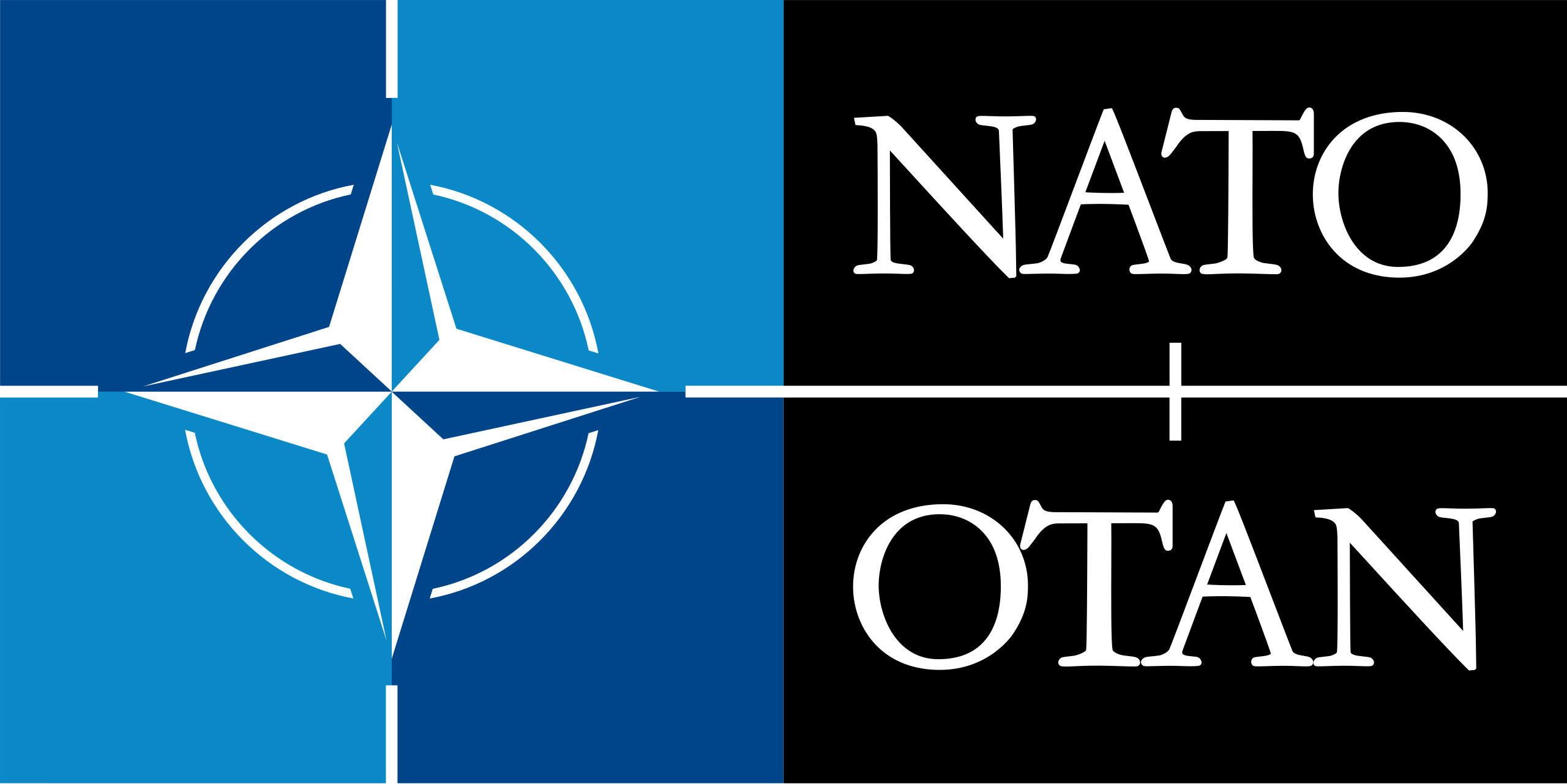 Mitglieder der NATO
Mitglieder der NATO

 States of Europe
States of Europe
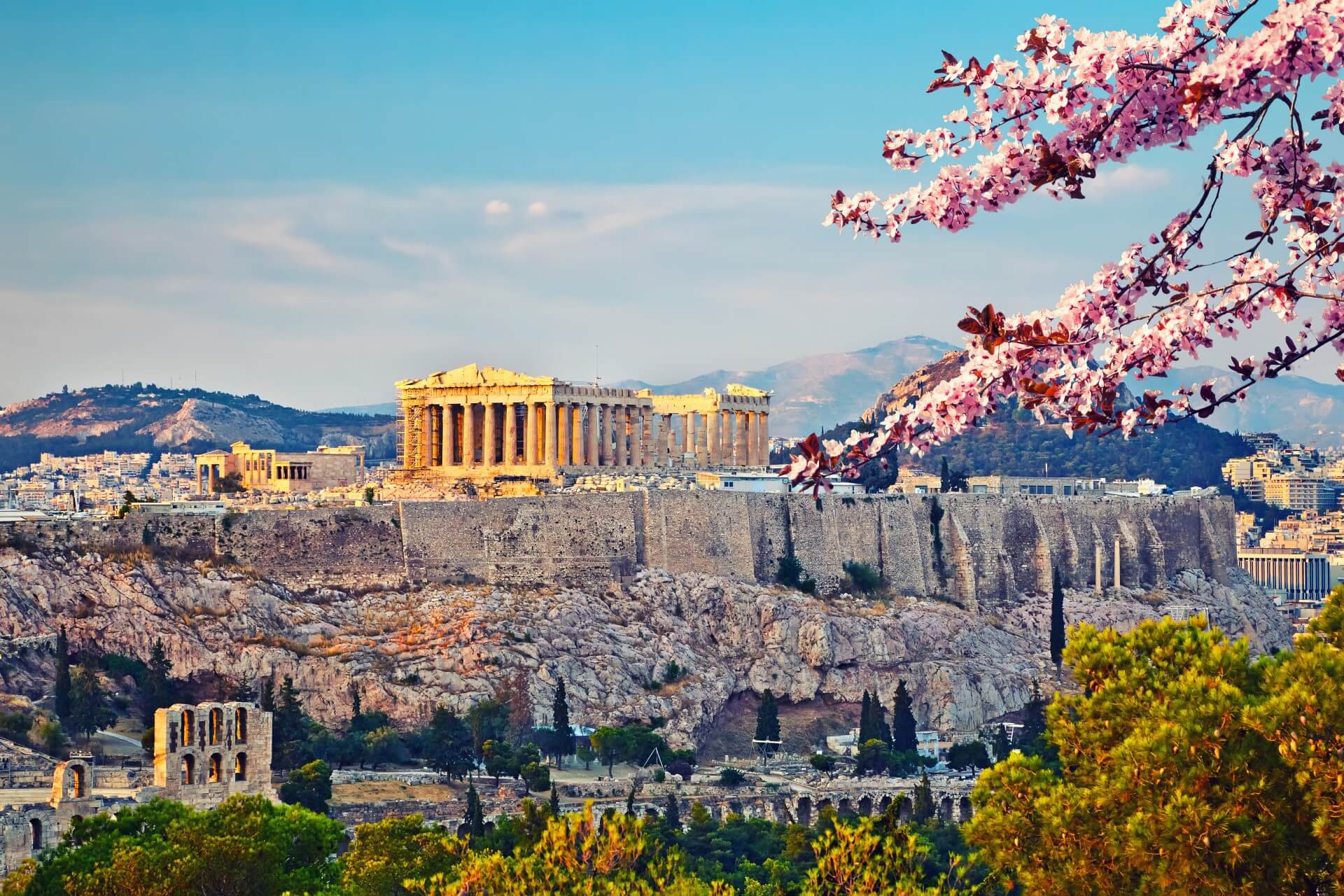
希腊共和国(希腊语:Ελληνική Δημοκρατία),简称“希腊”(希腊语:Ελλάδα),是地处欧洲东南角、巴尔干半岛的南端的共和制国家。全国由半岛南部的伯罗奔尼撒半岛和爱琴海中的3000余座岛屿共同构成。希腊为连接欧亚非的战略要地,本土从西北至正北部分别邻阿尔巴尼亚、马其顿、保加利亚三国,东北与土耳其国境接壤。周围则自东而西分别濒临爱琴海、地中海本域与伊奥尼亚海。
希腊是一个发达的资本主义国家,也是欧盟和北约的成员国,而且还是巴尔干地区最大的经济体。其海运业,旅游、侨汇并列为外汇收入三大支柱。且农业发达,工业主要以食品加工和轻工业为主。
希腊共和国(希腊语:Ελληνική Δημοκρατία,希腊语发音:[eliniˈci ðimokraˈti.a])[8][9],通称希腊(希腊语:Ελλάς,希腊语发音:[eˈlas]或希腊语:Ελλάδα,希腊语发音:[eˈlaða]),是位于欧洲东南部的跨大洲国家。2019年其人口为1,080万。雅典为希腊首都及最大城市,塞萨洛尼基为第二大城市。
希腊位于欧洲、亚洲和非洲的十字路口,战略地位重要。其位于巴尔干半岛南端,西北邻阿尔巴尼亚,北部邻北马其顿和保加利亚,东北邻土耳其。希腊分为九个地区:马其顿、中希腊、伯罗奔尼撒、色萨利、伊庇鲁斯、爱琴海诸岛(包括十二群岛及基克拉泽斯)、色雷斯、克里特和伊奥尼亚群岛。爱琴海位于希腊本土东侧,爱奥尼亚海位于西侧,克里特海和地中海位于南侧。希腊海岸线长达13,676千米(8,498英里),为地中海盆地国家中最长,世界第11长。希腊拥有大量岛屿,其中227个岛屿有人居住。其百分之八十区域为山地,奥林波斯山为全境最高峰,海拔2,918米(9,573英尺)。
希腊为世界上历史最悠久的国家之一,自公元前270,000年起即有人居住。其被称作西方文明的摇篮,为民主制度、西方哲学、奥林匹克运动会、西方文学、史学、政治学、重要科学及数学原理、西方戏剧(悲剧及喜剧)的发源地[10]。公元前4世纪马其顿腓力二世首先统一了希腊。其子亚历山大大帝迅速征服了古代世界的大片地区,将希腊文化和科学自东地中海地区传播至印度河流域。公元前2世纪希腊为罗马所吞并,成为罗马帝国及其继承国拜占庭帝国的核心组成部分,其中后者为希腊语言及文化所主导。公元1世纪希腊正教会建立起来,塑造了现代希腊的文化认同,并将希腊传统传播至正教世界[11]。15世纪中叶,奥斯曼帝国夺取了希腊地区。在十九世纪二十年代历经独立战争后,于1830年希腊作为现代民族国家被国际社会所承认。希腊拥有18项世界遗产,其中包括文化遗产16项,文化与自然双重遗产2项,这一数目在欧洲及世界均居前列[12]。
希腊为民主制国家,发达国家及高收入经济体,其生活质量较高,及人类发展指数为极高。希腊为联合国创始国之一,为欧洲共同体(欧洲联盟前身)第十个成员国,并自2001年以来为欧元区成员国。其亦为诸多国际组织的成员国,包括欧洲委员会、北大西洋公约组织、经济合作与发展组织、世界贸易组织、欧洲安全与合作组织及法语圈国际组织。希腊的独特文化地位、旅游业、船运业及战略地位使其被归为一中等强国[13][14][15]。其为巴尔干地区最大规模经济体,并为这一区域重要的投资者之一。
Griechenland (griechisch Ελλάδα [ɛˈlaða], Elláda, formell Ελλάς, Ellás ‚Hellas‘; amtliche Vollform Ελληνική Δημοκρατία, Ellinikí Dimokratía ‚Hellenische Republik‘[6]) ist ein Staat in Südosteuropa und ein Mittelmeeranrainerstaat. Das griechische Staatsgebiet grenzt an Albanien, Nordmazedonien, Bulgarien und die Türkei. Griechenland ist eine parlamentarische Republik mit präsidialen Elementen; die Exekutive liegt bei der Regierung, zum kleineren Teil auch beim Staatspräsidenten. Die Hauptstadt des Landes ist Athen. Weitere bedeutende große Städte sind Thessaloniki, Patras, Iraklio und Piräus.
Das antike Griechenland ist als frühe europäische Hochkultur bekannt, die wichtige Errungenschaften wie die attische Demokratie und Philosophie, frühe Naturwissenschaften und die klassische griechische Architektur hervorbrachte. Nach dem Ende der Antike und dem Aufgehen in verschiedenen Großreichen wie Byzanz und Osmanischem Reich konnte erst im 19. Jahrhundert im Zuge der griechischen Revolution und der folgenden Unabhängigkeit von den Osmanen wieder ein griechischer Staat gebildet werden. Die heutige parlamentarische Präsidialdemokratie geht zurück auf das Referendum im Dezember 1974 zur Abschaffung der Monarchie und für die Einführung der Republik.
Griechenland ist Mitglied der Vereinten Nationen, der OECD, der NATO (seit 1952), der OSZE und des Europarates. 1981 wurde Griechenland in die Europäische Union aufgenommen. Zum 1. Januar 2001 trat Griechenland der Eurozone bei.
Gemessen am Index der menschlichen Entwicklung (HDI) zählt Griechenland zu den sehr hoch entwickelten Staaten.[7] Wirtschaftlich bedeutend sind insbesondere die Branchen Tourismus und Handel. Das verarbeitende Gewerbe hat (Stand 2015) im Vergleich zu anderen hochentwickelten Staaten geringe Bedeutung. Einen wesentlichen Anteil im Industriesektor haben das Ernährungsgewerbe und die Metallverarbeitung. Nach einer langen Rezession oder Stagnation der Wirtschaft seit 2008 erholt sich die Wirtschaft seit 2017 wieder; die Arbeitslosenquote Griechenlands ist die höchste in der Europäischen Union.

 Geography
Geography

 Geography
Geography
 ***IMF Developed countries
***IMF Developed countries
 Iceland
Iceland
 IMF Developed countries
IMF Developed countries
 IMF Developed countries
IMF Developed countries
 TOP6
TOP6

 Mitglieder der NATO
Mitglieder der NATO

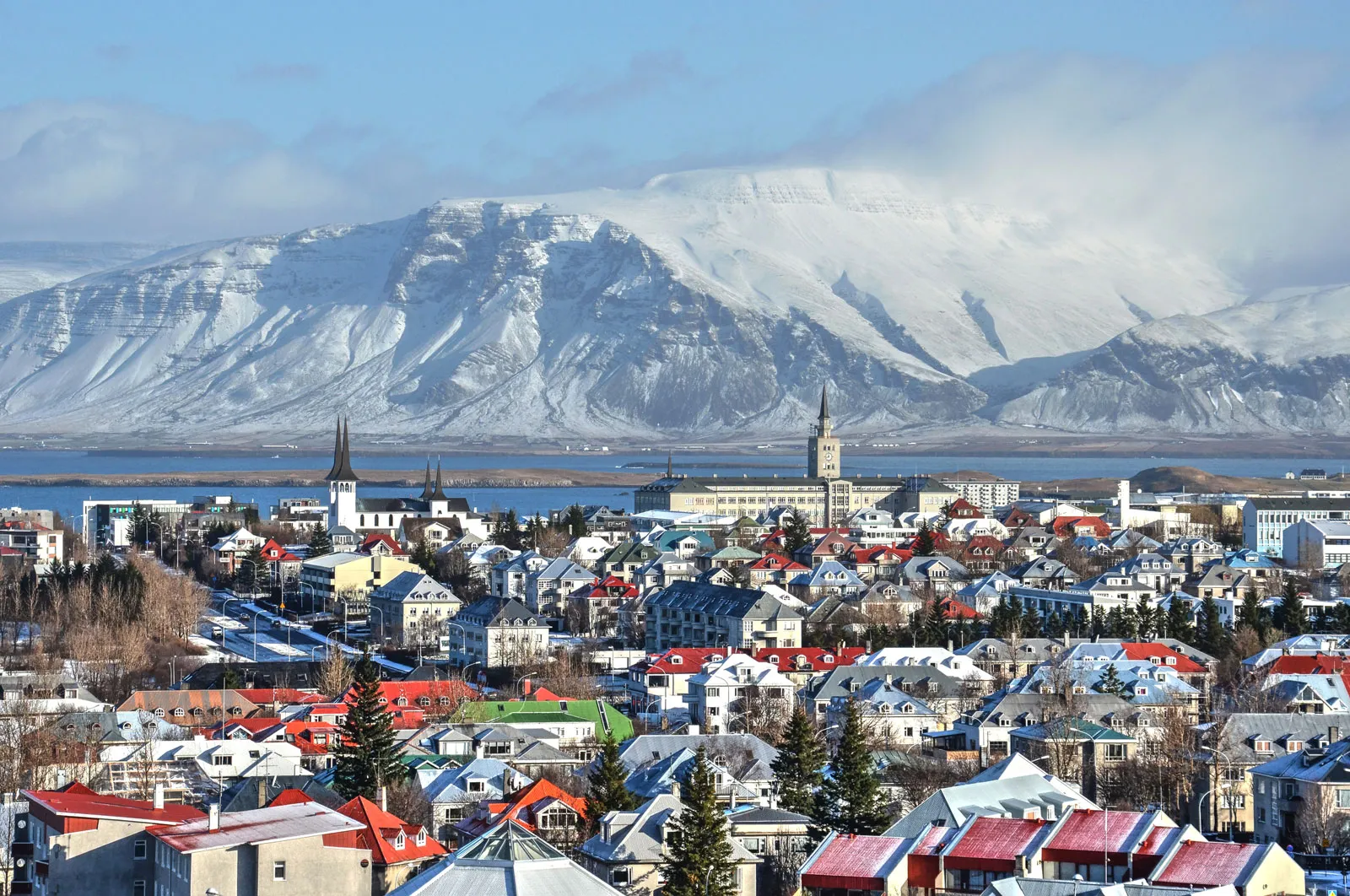
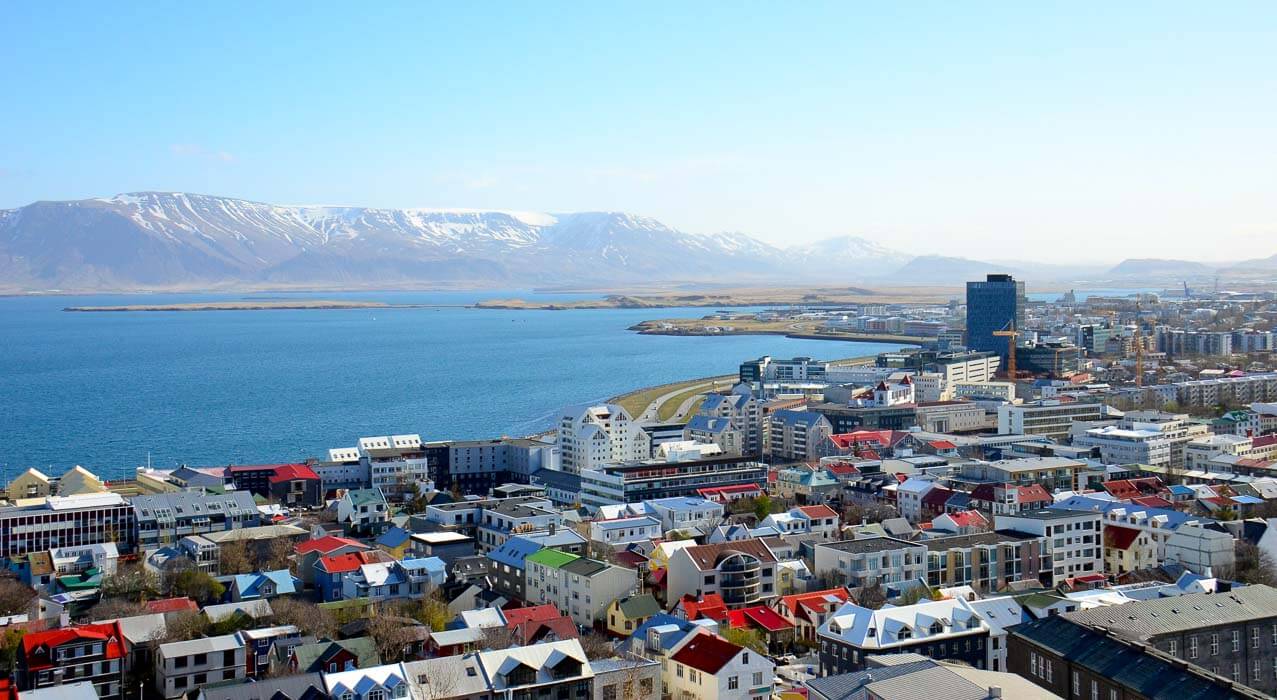
冰岛(冰岛语:Ísland)[注 1]是北大西洋中的一个岛国,位于北大西洋和北冰洋的交汇处,通常被视为北欧五国之一[9]。冰岛国土面积为10.3万平方千米,人口为35万,尽管面积不大,却是欧洲人口密度最小的国家[10],也是世界范围内人口密度很小的国家之一。冰岛的首都是雷克雅未克,也是冰岛的最大城市[11],首都附近的西南地区人口占全国的三分之二。冰岛地处大西洋中洋脊上[12],是一个多火山、地质活动频繁的国家。内陆主要是平原地貌,境内多分布沙质地、冷却的熔岩平原和冰川。冰岛虽然位于北极圈边缘,但有北大西洋暖流所以气温适中。
根据《殖民之书》的记述,欧洲定居者的历史最早可追溯至公元874年,维京人殷格·亚纳逊一行人是冰岛最早的永久定居者,其他更早的定居者仅在冰岛过冬[13]。其后的几个世纪,斯堪的纳维亚人在冰岛定居,他们也带来了盖尔人奴隶。1262至1814年冰岛成为了挪威的一部分,之后属丹麦挪威联合王国治下。1918年冰岛宣布独立并在1944年成立共和国。20世纪前,冰岛人主要依靠渔业和农业为生,冰岛亦曾是欧洲最不发达国家。二战时纳粹德国于1940年4月9日攻占了丹麦和入侵挪威,冰岛暂时取得独立。德国海军在北海游离严重威胁英国使英国于1940年5月占领了冰岛,以防德军登陆冰岛威胁英国北部,1941年6月美国及加拿大军队进驻冰岛,英美加三国占领冰岛直至二战结束,可见冰岛的战略地位。渔业的工业化以及二次大战后美国马歇尔计划的援助带来了冰岛的繁荣,1990年代冰岛成为了世界最发达的国家之一。1994年冰岛加入了欧洲经济区,其经济结构也因金融服务业的引入而趋向多元化。
冰岛是联合国、北大西洋公约组织、欧洲自由贸易联盟、欧洲经济区、北欧理事会与经济合作与发展组织的会员国,但是并未加入欧洲联盟。冰岛为市场经济,与其他经济合作与发展组织成员国相比税率较低,并且国民拥有国家提供的健康保险和高等教育等北欧福利系统。2014年冰岛位于联合国人类发展指数的第13位。2008年冰岛发生金融危机,境内的银行国有化,冰岛币值都大幅贬值。
冰岛文化与其他北欧斯堪地纳维亚文化有很深渊源,大多数冰岛人是斯堪地纳维亚人和盖尔人的后裔。冰岛语属北日耳曼语支,起源于古诺尔斯语并与法罗语及挪威西部方言接近。冰岛的文化遗产主要为传统冰岛菜、诗歌和中世纪的冰岛萨迦。在北约成员国中,冰岛人口最少并且是唯一没有常备军队的国家,仅有海巡部队。
Island (isländisch Ísland von íss „Eis“ und land „Land“) ist mit rund 103.000 km² (Landfläche: 100.250 km², Wasserfläche: 2.750 km², mit Fischereizone 758.000 km²) – nach dem Vereinigten Königreich – der flächenmäßig zweitgrößte Inselstaat Europas. Die Hauptinsel ist die größte Vulkaninsel der Erde und befindet sich knapp südlich des nördlichen Polarkreises. Island ist Mitglied der EFTA, des Europäischen Wirtschaftsraums, des Nordischen Rates sowie Gründungsmitglied der NATO.
Die 336.060 Einwohner (Juni 2016) leben in dem am dünnsten besiedelten Land Europas. Über 60 Prozent der isländischen Bevölkerung konzentrieren sich auf die Hauptstadtregion von Reykjavík.
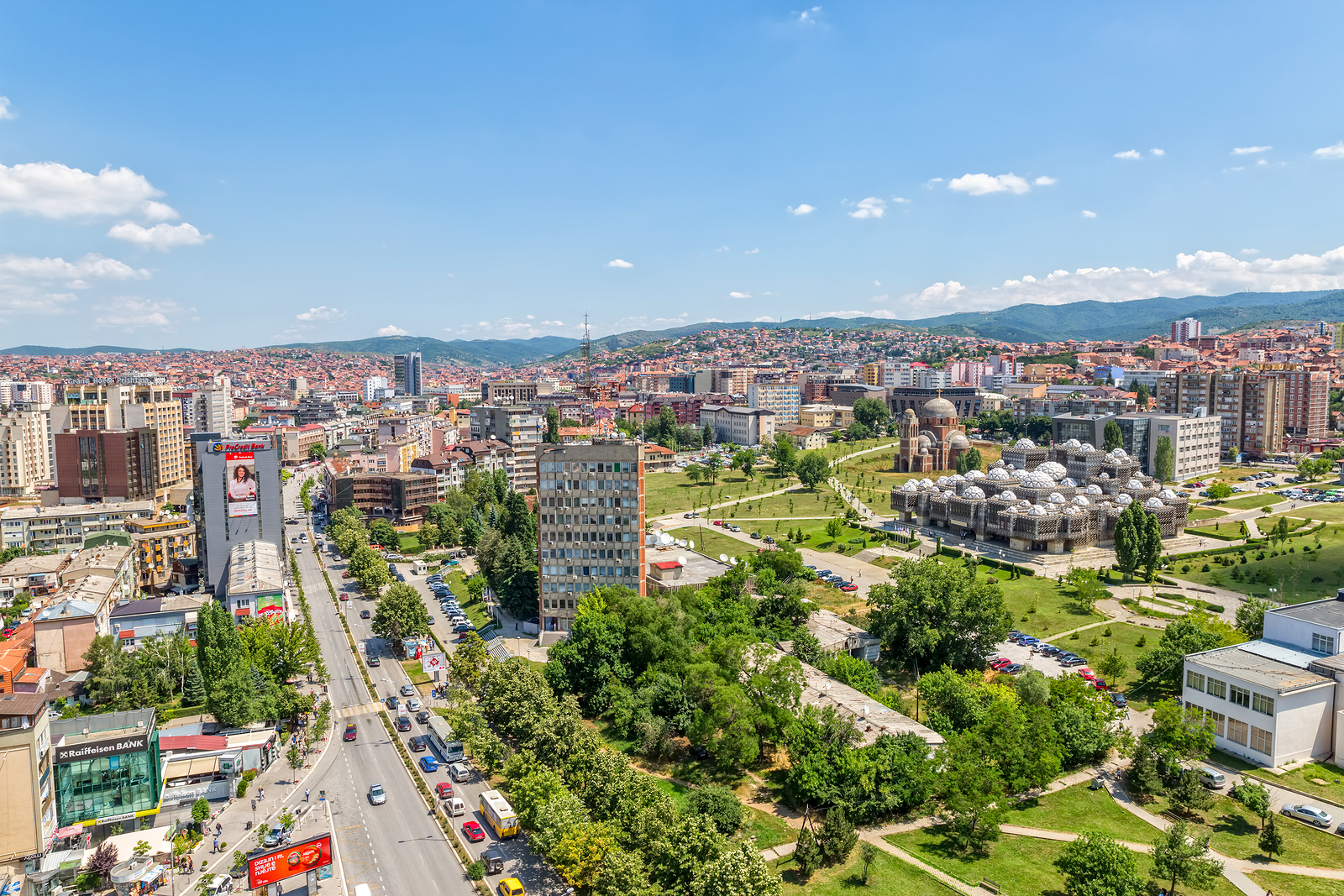
Die Republik Kosovo (kurz der/das Kosovo, albanisch Kosovë/Kosova, serbisch-kyrillisch Косово) ist eine Republik in Südosteuropa auf dem westlichen Teil der Balkanhalbinsel. Sie hat etwa 1,9 Millionen Einwohner, die Kosovaren genannt werden, und gilt als ein De-facto-Staat[10] oder weiterhin stabilisiertes De-facto-Regime[11]. Die Hauptstadt und größte Stadt des Kosovo ist Pristina.
Kosovo war eine autonome Region innerhalb der ehemaligen Sozialistischen Föderativen Republik Jugoslawien, ab dem 26. April 1992 Bestandteil der neu konstituierten föderativen Bundesrepublik Jugoslawien und ab 2003 eine Teilregion der Republik Serbien. Die jüngere Geschichte ist durch den Kosovokrieg von 1999 und dessen Folgen geprägt. Der gegenwärtige völkerrechtliche Status des Landes ist umstritten.[12] Am 17. Februar 2008 proklamierte das Parlament die Unabhängigkeit des Territoriums. 115 der 193 Mitgliedstaaten der Vereinten Nationen erkennen die Republik Kosovo als einen unabhängigen Staat an.[5]
Bei formeller Wahrung der Zugehörigkeit zur Bundesrepublik Jugoslawien wurde Kosovo nach dem Krieg im Jahr 1999 unter die Verwaltungshoheit der Vereinten Nationen gestellt.[13] Völkerrechtliche Grundlage war hierbei die Resolution 1244 des UN-Sicherheitsrates, welche die Souveränität und territoriale Unversehrtheit der Bundesrepublik Jugoslawien garantiert, deren Rechtsnachfolger das heutige Serbien ist. Zudem wird die politische Entwicklung seit dem 9. Dezember 2008 durch die EULEX Kosovo überwacht. Dies gilt auch für die überwiegend von Serben bewohnte Region Nordkosovo, die von der Regierung in Pristina derzeit nur beschränkt kontrolliert wird.[14]
Der Internationale Gerichtshof (IGH) gelangte am 22. Juli 2010 in einem rechtlich nicht bindenden, von der UN-Generalversammlung auf serbische Initiative angeforderten Gutachten zu dem Ergebnis, dass die Unabhängigkeitserklärung des Kosovo nicht gegen das Völkerrecht verstoße. Gleichzeitig vermied der IGH, den Rechtsstatus des Kosovo zu bewerten, und erkannte die Gültigkeit der UN-Resolution 1244 an.[15]
Die serbische Regierung betrachtet den Kosovo formal als Serbiens Autonome Provinz Kosovo und Metochien (serbisch Аутономна покрајина Косово и Метохија Autonomna pokrajina Kosovo i Metohija, kurz Космет Kosmet; albanisch Krahina Autonome e Kosovës dhe Metohisë), räumt jedoch ein, dass eine „serbische Souveränität über den Kosovo praktisch nicht vorhanden ist“ und die „wahren Grenzen“ Serbiens in der Zukunft noch völkervertragsrechtlich festzulegen seien.[16]
Das Land ist seit Juni 2009 Mitglied im Internationalen Währungsfonds (IWF) und der Weltbankgruppe.[17] Seit November 2012 gehört es auch der Europäischen Bank für Wiederaufbau und Entwicklung an.
科索沃共和国(阿尔巴尼亚语:Republika e Kosovës;塞尔维亚语:Република Косово,罗马化:Republika Kosovo),通称科索沃(阿尔巴尼亚语:Kosovë,阿尔巴尼亚语定指形式:Kosova;塞尔维亚语:Косово,罗马化:Kosovo),位于欧洲东南部的巴尔干半岛,是一个主权争端地区及有限承认国家。塞尔维亚虽然承认其民选政府,但只承认该地区为塞尔维亚的两个自治省之一。
自1999年科索沃战争结束以来,科索沃事实上独立,仅在名义上是塞尔维亚的一部分,实际上则是联合国的托管地,并由联合国科索沃临时行政当局特派团临时管治。1990年至1999年间,该地的阿尔巴尼亚族人也将科索沃称为“科索沃共和国”,但当时该国仅有同族的阿尔巴尼亚一国承认。
科索沃问题一直悬而未决,阿尔巴尼亚族人坚持要求独立,但是塞尔维亚方要求保证塞尔维亚领土完整仅允许自治。各方已于2006年2月20日起就科索沃问题展开谈判。经过两年的谈判与周旋,科索沃于2008年2月17日自行通过独立宣言,宣布脱离塞尔维亚,现已得到98个联合国会员国的承认。[2]塞尔维亚政府已经宣布绝不放弃科索沃的主权,准备采取多项制裁措施,但称保证绝不使用武力阻止科索沃的独立,故现时暂未有暴力冲突。2010年7月22日,国际法院指科索沃宣布脱离塞尔维亚独立,并不违反国际法,然而是否承认科索沃地位各国均有自己的见解。
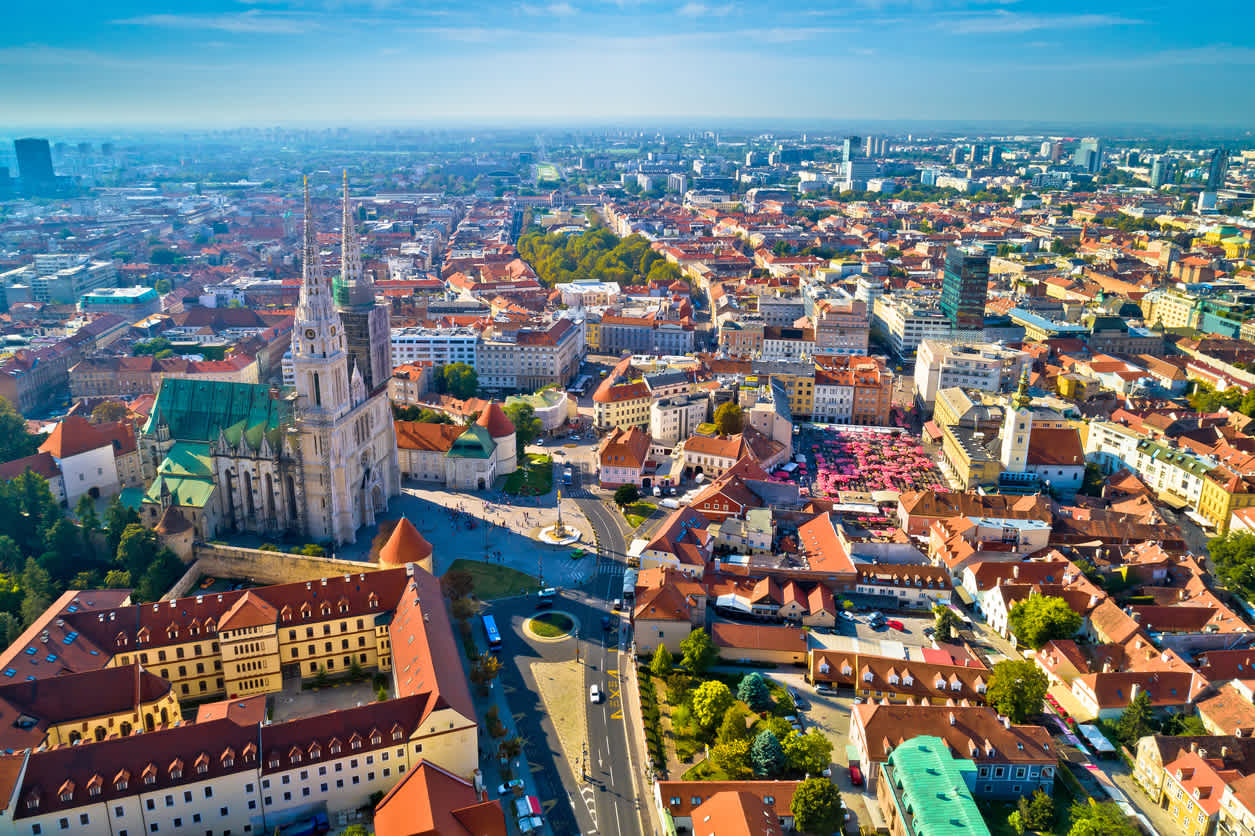
克罗地亚共和国(克罗地亚语:Republika Hrvatska),通称克罗地亚(克罗地亚语:Hrvatska,音译赫尔瓦茨卡),是一个位于中欧、地中海和巴尔干半岛交会处的单一议会共和制国家,首都与最大城市为萨格勒布。克国将行政区划分为20个县与一个直辖市兼首都的萨格勒布,其领土面积为56,538平方公里。克罗地亚气候多样,同时具备大陆性与地中海型气候,并于亚得里亚海沿岸拥有超过1000座岛屿。2019年克罗地亚人口约为407万人,多数为克罗地亚人,自从克罗地亚由南斯拉夫独立后至今该国如同大部分巴尔干半岛国家一样人口持续减少。
克罗地亚民族自公元7世纪迁移到现在的克国领土生活,他们于9世纪时建立了两个公国,后于925年由托米斯拉夫将其统一为王国,并成了第一位国王。其历史是一连串与保加利亚第一帝国、拜占庭帝国和匈牙利王国的冲突,并与威尼斯竞争亚德里亚海东岸。该王国从10世纪开始在统治区域推广克罗地亚语并因此与教宗发生冲突。11世纪后期克罗地亚试图保卫其被拜占庭帝国侵犯的达尔马提亚,此时王国在佩塔尔·克雷希米尔四世(1058年-1074年)与狄米塔·兹沃尼米尔(1075年-1089年)统领时期发展到鼎盛。公元1091年斯特凡二世去世,特皮米洛维齐王朝绝嗣,克罗地亚发生继承内战,直到1102年王位由匈牙利国王卡尔曼继位,克罗地亚与匈牙利组成共主联邦。1463年,奥斯曼帝国征服了波斯尼亚,对克罗地亚构成相当的威胁,随后前者又继续扩张,克罗地亚于是与奥斯曼帝国展开近百年的抵抗战争。面对帝国的威胁,1527年,克国议会推选哈布斯堡王朝的奥地利国王——斐迪南一世为克罗地亚国王,随后约四百年里,克罗地亚的统治权在匈牙利与奥地利帝国之间多次易手。
1918年,第一次世界大战结束,奥匈帝国解体,独立出了包括克罗地亚领土在内的斯洛文尼亚人-克罗地亚人和塞尔维亚人国,这个短命的政权后来成为南斯拉夫王国。1941年4月,南斯拉夫王国被轴心国入侵,南斯拉夫战役爆发,王国被德、义、匈牙利王国和保加利亚王国支解,纳粹德国和意大利王国于当地包括波黑在内扶持了傀儡政权——克罗地亚独立国。战后,克罗地亚独立国灭亡,克人成立共和国加盟“南斯拉夫联邦人民共和国”,成为社会主义国家。1991年6月,克罗地亚宣布自南斯拉夫联邦独立,其宣言于同年10月8日开始生效。随后爆发与反对国家分裂的联邦军之间的战争,经过长达四年的战事,克国取得了胜利,成为主权国家。
克罗地亚至今已是个极高人类发展指数的国家,国民拥有全民健康保险和免费的中小学教育,国家也积极透过企业和公家机关推展文化、媒体与出版产业。克国经济以服务业为主,其次为工业和农业,国家也掌控了部分的经济结构,并给予大量的财政支持。国际货币基金组织将该国列为新兴发展中的经济体,而世界银行也将其评作高收入国家。克国最重要的贸易伙伴为欧盟,也因此自2000年起,克国政府开始大量投资基础设施,特别是泛欧走廊一带的交通线。克国同时也为联合国、欧洲委员会、北大西洋公约组织、世界贸易组织、中欧自由贸易协定和地中海联盟的成员国,2013年7月1日还加入了欧盟,成为其第28个成员国。克罗地亚也积极参与联合国维和部队事务,同北约驻军于阿富汗,亦于2008至2009年担任联合国安理会的非常任理事国。
Kroatien (kroatisch [xř̩ʋaːtskaː], amtlich Republik Kroatien, kroatisch ) ist ein Staat in der Übergangszone zwischen Mittel- und Südosteuropa. Kroatien ist Mitglied der Europäischen Union, der NATO, der Welthandelsorganisation, der OSZE und der Vereinten Nationen. Hauptstadt und größte Stadt ist Zagreb, zu den weiteren Großstädten zählen Split, Rijeka und Osijek.
Das Staatsgebiet liegt östlich des Adriatischen Meeres und zum Teil im Südwesten der Pannonischen Tiefebene. Es grenzt im Nordwesten an Slowenien, im Norden an Ungarn, im Nordosten an Serbien, im Osten an Bosnien und Herzegowina und im Südosten an Montenegro. Das Gebiet der einstigen Republik Ragusa (Dubrovačka Republika), das heute den südlichsten Teil des Staates ausmacht, verfügt über keine direkte Landverbindung zum übrigen Staatsgebiet, da der wenige Kilometer breite Meereszugang von Bosnien und Herzegowina dazwischen liegt; das Gebiet um Dubrovnik bildet damit die einzige Exklave des Landes.
クロアチア共和国(クロアチアきょうわこく、Republika Hrvatska)、通称クロアチアは、東ヨーロッパ、バルカン半島に位置する共和制国家である。首都はザグレブ。
本土では西にスロベニア、北にハンガリー、東にボスニア・ヘルツェゴビナ、セルビアと国境を接している。南はアドリア海に面し対岸はイタリア、飛び地のドゥブロヴニクでは東にモンテネグロと接している。
同国は『該当地域が「分離と合併を幾度も繰り返した」歴史を持つ』国家のひとつに数え上げられる。1991年に、それまで連邦を構成していたユーゴスラビア社会主義連邦共和国から独立した。
Croatia (/kroʊˈeɪʃə/ (![]() listen), kroh-AY-shə; Croatian: Hrvatska, pronounced [xř̩ʋaːtskaː]), officially the Republic of Croatia (Croatian: Republika Hrvatska, (
listen), kroh-AY-shə; Croatian: Hrvatska, pronounced [xř̩ʋaːtskaː]), officially the Republic of Croatia (Croatian: Republika Hrvatska, (![]() listen)),[e] is a country at the crossroads of Central and Southeast Europe on the Adriatic Sea. Croatia borders Slovenia to the northwest, Hungary to the northeast, Serbia to the east, Bosnia and Herzegovina and Montenegro to the southeast, and shares a maritime border with Italy to the west and southwest. Its capital and largest city, Zagreb, forms one of the country's primary subdivisions, with twenty counties. Croatia has an area of 56,594 square kilometres (21,851 square miles) and a population of 4.07 million.
listen)),[e] is a country at the crossroads of Central and Southeast Europe on the Adriatic Sea. Croatia borders Slovenia to the northwest, Hungary to the northeast, Serbia to the east, Bosnia and Herzegovina and Montenegro to the southeast, and shares a maritime border with Italy to the west and southwest. Its capital and largest city, Zagreb, forms one of the country's primary subdivisions, with twenty counties. Croatia has an area of 56,594 square kilometres (21,851 square miles) and a population of 4.07 million.
The Croats arrived in the 6th century and organised the territory into two duchies by the 9th century. Croatia was first internationally recognised as independent on 7 June 879 during the reign of Duke Branimir. Tomislav became the first king by 925, elevating Croatia to the status of a kingdom. During the succession crisis after the Trpimirović dynasty ended, Croatia entered a personal union with Hungary in 1102. In 1527, faced with Ottoman conquest, the Croatian Parliament elected Ferdinand I of Austria to the Croatian throne. In October 1918, the State of Slovenes, Croats and Serbs, independent from Austria-Hungary, was proclaimed in Zagreb, and in December 1918, merged into the Kingdom of Yugoslavia. Following the Axis invasion of Yugoslavia in April 1941, most of Croatia was incorporated into a Nazi installed puppet state, the Independent State of Croatia. A resistance movement led to the creation of the Socialist Republic of Croatia, which after the war became a founding member and constituent of the Socialist Federal Republic of Yugoslavia. On 25 June 1991, Croatia declared independence, and the War of Independence was fought for four years following the declaration.
A sovereign state, Croatia is a republic governed under a parliamentary system. It is a member of the European Union, the United Nations, the Council of Europe, NATO, the World Trade Organization, and a founding member of the Union for the Mediterranean. An active participant in United Nations peacekeeping, Croatia has contributed troops to the International Security Assistance Force and took a nonpermanent seat on the United Nations Security Council for the 2008–2009 term. Since 2000, the Croatian government has invested in infrastructure, especially transport routes and facilities along the Pan-European corridors.
Croatia is classified by the World Bank as a high-income economy and ranks very high on the Human Development Index. Service, industrial sectors, and agriculture dominate the economy, respectively. Tourism is a significant source of revenue, with Croatia ranked among the 20 most popular tourist destinations. The state controls a part of the economy, with substantial government expenditure. The European Union is Croatia's most important trading partner. Croatia provides social security, universal health care, and tuition-free primary and secondary education while supporting culture through public institutions and corporate investments in media and publishing.
La Croatie, en forme longue la république de Croatie, en croate : Hrvatska et Republika Hrvatska écouter, est un pays d'Europe centrale et du Sud, indépendant depuis 1991 lors de la dislocation violente de la Yougoslavie. Il s'étend depuis les confins de l'extrémité orientale des Alpes au nord-ouest et depuis les plaines pannoniennes au nord-est, jusqu'au littoral de la mer Adriatique au sud-sud-ouest, en passant par le massif montagneux des Alpes dinariques au centre.
Elle est entourée par la Slovénie, la Hongrie, la Serbie, la Bosnie-Herzégovine et le Monténégro. Sa capitale est Zagreb et elle est membre de l'Union européenne depuis le 1er juillet 20135, de l'OMC depuis 20006 et de l'OTAN depuis 2009.
La Croazia, ufficialmente Repubblica di Croazia (in croato Republika Hrvatska), è uno Stato indipendente dell'Unione europea con una popolazione di 4076246 abitanti nel 2019. La sua capitale è Zagabria.
Confina a nord con la Slovenia, a nord-est con l'Ungheria, a est con la Serbia, a sud con la Bosnia ed Erzegovina e il Montenegro, mentre a ovest è affacciata sul mare Adriatico. La sua superficie territoriale è di 56594 km² di cui 620 di acque interne[7].
La Croazia è una repubblica parlamentare[7] la cui lingua ufficiale è il croato. La regione istriana adotta ufficialmente il bilinguismo (croato e italiano), ma la sua attuazione varia a livello comunale[8].
Tra il 1102 e il 1918 la Croazia fu unita al Regno d'Ungheria, seguendone le sorti; fu successivamente un'unità territoriale della Jugoslavia fino al 1991 — fatta eccezione per l'effimero Stato Indipendente di Croazia, Paese-fantoccio al soldo della coalizione nazifascista dell'Asse italo-tedesco — divenendone indipendente all'inizio delle guerre dei Balcani. La Croazia aderisce alla NATO dal 1º aprile 2009[9] e dal 1º luglio 2013 è il 28º membro dell'Unione europea[2]. Al pari di Cipro, Bulgaria e Romania, la Croazia fa parte di quei Paesi sottoscrittori della convenzione di Schengen pur restando fuori dal relativo spazio per mancanza di adeguamenti tecnici, mantenendo quindi i controlli alle frontiere.
Il Paese ha due giorni di festa nazionale: il 25 giugno, anniversario dell'indipendenza dichiarata, e l'8 ottobre, anniversario di quella effettiva, dalla Jugoslavia nel 1991.
Croacia (en croata, Hrvatska, AFI: [xř̩.ʋaː.ʦkaː]), oficialmente República de Croacia (Republika Hrvatska ![]() escuchar (?·i)), es uno de los veintisiete estados soberanos que forman la Unión Europea, el cual está ubicado entre Europa Central, Europa meridional y el mar Adriático; limita al noreste con Hungría, al este con Serbia, al sureste con Bosnia-Herzegovina y Montenegro, al noroeste con Eslovenia y al suroeste con el mar Adriático; donde comparte una frontera marítima con Italia.
escuchar (?·i)), es uno de los veintisiete estados soberanos que forman la Unión Europea, el cual está ubicado entre Europa Central, Europa meridional y el mar Adriático; limita al noreste con Hungría, al este con Serbia, al sureste con Bosnia-Herzegovina y Montenegro, al noroeste con Eslovenia y al suroeste con el mar Adriático; donde comparte una frontera marítima con Italia.
Su capital y ciudad más poblada es Zagreb. Tiene 56 594 km² de extensión territorial1 —esta cifra incluye las más de mil islas (1185) que se ubican frente a la costa del mar Adriático— y cuenta con un clima variado, en su mayor parte continental y mediterráneo. En cuanto a la administración política, el país está dividido en veinte condados y la ciudad de Zagreb. Su población asciende a más de 4.29 millones de habitantes, la mayor parte de ellos son croatas de religión católica.
A principios del siglo VII los croatas arribaron a la zona y dos siglos más tarde se organizaron en dos ducados. En el año 925 Tomislav se convirtió en el primer rey, elevando el estatus del estado a un reino. El Reino de Croacia mantuvo su soberanía por casi dos siglos, y alcanzó su apogeo durante el reinado de Pedro Krešimir IV y Demetrio Zvonimir. Croacia formó una unión personal con Hungría en 1102. En 1527, amenazado por la expansión otomana, el parlamento croata eligió a Fernando I de Habsburgo como sucesor del trono croata. En 1918, tras la Primera Guerra Mundial, formó parte del efímero Reino de los Serbios, Croatas y Eslovenos, el cual se había separado de Austria–Hungría, y que posteriormente se transformó en el Reino de Yugoslavia. Durante la Segunda Guerra Mundial se fundó un Estado títere de la Alemania nazi. Luego de la guerra, Croacia fue un miembro fundador y elemento federal de la Segunda Yugoslavia, un Estado socialista. En junio de 1991 Croacia declaró su independencia, la cual fue reconocida el 8 de octubre de ese año. La guerra croata de Independencia tuvo lugar en los cuatro años sucesivos a la declaración.
En 2012 Croacia mantenía un Índice de Desarrollo Humano muy alto. El Fondo Monetario Internacional la clasificó como una economía emergente y en desarrollo, mientras que el Banco Mundial la identificó como una economía de altos ingresos. Croacia es miembro de la ONU, el Consejo de Europa, la OTAN, la Organización Mundial de Comercio y es un miembro fundador de la Unión por el Mediterráneo. Además, en julio de 2013 Croacia accedió a la Unión Europea. Como un miembro activo de las Fuerzas de paz de las Naciones Unidas, ha contribuido con tropas a la misión de seguridad de la OTAN en Afganistán y durante el periodo de 2008 a 2009 ocupó un asiento del Consejo de Seguridad de la ONU.
La economía croata está dominada por el sector servicios, seguido por la industria y la agricultura. El turismo es una fuente de ingresos importante durante el verano, ya que el país se encuentra dentro de los veinte destinos turísticos más visitados en el mundo. El Estado controla una parte de la economía, con un gasto gubernamental importante y su principal socio comercial es la Unión Europea. Desde el 2000 el país invirtió en infraestructura, especialmente en caminos y medios de transporte, así como en los corredores Pan-Europeos. El Estado croata provee de un sistema de salud universal y educación primaria y secundaria gratuita, al mismo tiempo que apoya la cultura por medio de diversas instituciones públicas e inversiones en los medios de comunicación y la literatura.
Хорва́тия (хорв. Hrvatska [xř̩ʋaːtskaː]), официально — Респу́блика Хорва́тия (хорв. Republika Hrvatska) — государство на юге Центральной Европы или в Южной Европе, частично на западе Балканского полуострова, бывшая союзная республика в составе Югославии, ставшая независимой в 1991 году. Население, по данным на 30 июня 2020 года, составляет 4 227 746 человек, территория — 56 594 км². Занимает 127-е место в мире по численности населения и 128-е по территории.
Форма правления — парламентская республика. Пост премьер-министра с 19 октября 2016 года занимает Андрей Пленкович, а пост президента с 19 февраля 2020 — Зоран Миланович.
Столица и крупнейший город — Загреб. Хорватия граничит на северо-западе со Словенией, на северо-востоке — с Венгрией и Сербией, на юге и востоке — с Боснией и Герцеговиной и Черногорией; на западе омывается Адриатическим морем и имеет морскую границу с Италией.
Государственная валюта — куна.
Страна является членом Организации Объединённых Наций с 1992 года; ОБСЕ, Совета Европы, НАТО с 2009 года; Европейского союза с 2013 года.

 Geography
Geography

 Geography
Geography
 ***IMF Developed countries
***IMF Developed countries
 IMF Developed countries
IMF Developed countries
 IMF Developed countries
IMF Developed countries
 TOP6
TOP6
 Latvia
Latvia

 Mitglieder der NATO
Mitglieder der NATO

 States of Europe
States of Europe


 Geography
Geography

 Geography
Geography
 ***IMF Developed countries
***IMF Developed countries
 IMF Developed countries
IMF Developed countries
 IMF Developed countries
IMF Developed countries
 TOP6
TOP6
 Lithuania
Lithuania

 Mitglieder der NATO
Mitglieder der NATO

 States of Europe
States of Europe
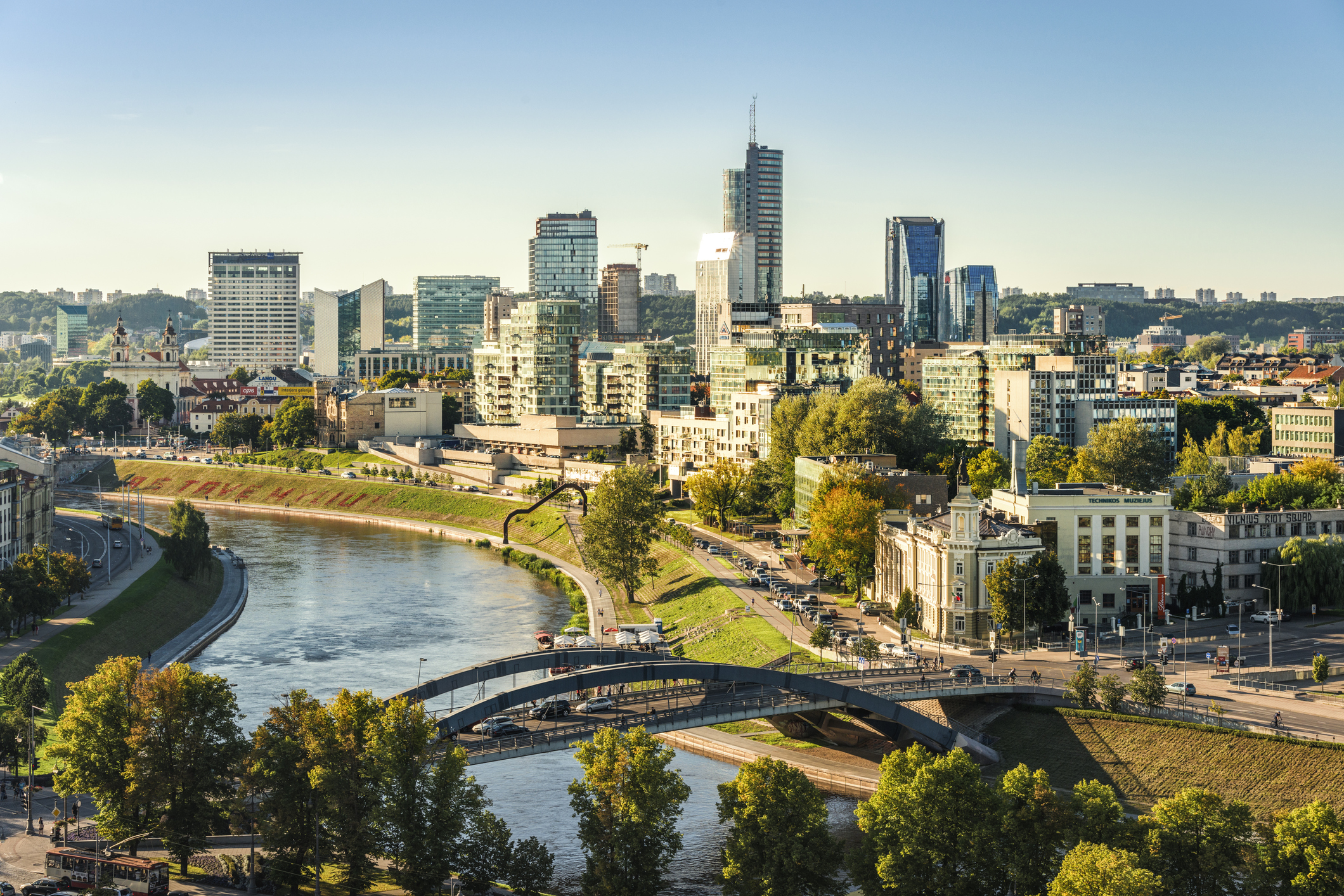
 *Mediterranean Sea
*Mediterranean Sea
 Commonwealth of Nations
Commonwealth of Nations

 Geography
Geography

 Geography
Geography
 ***IMF Developed countries
***IMF Developed countries
 IMF Developed countries
IMF Developed countries
 IMF Developed countries
IMF Developed countries
 TOP6
TOP6
 Malta
Malta

 States of Europe
States of Europe
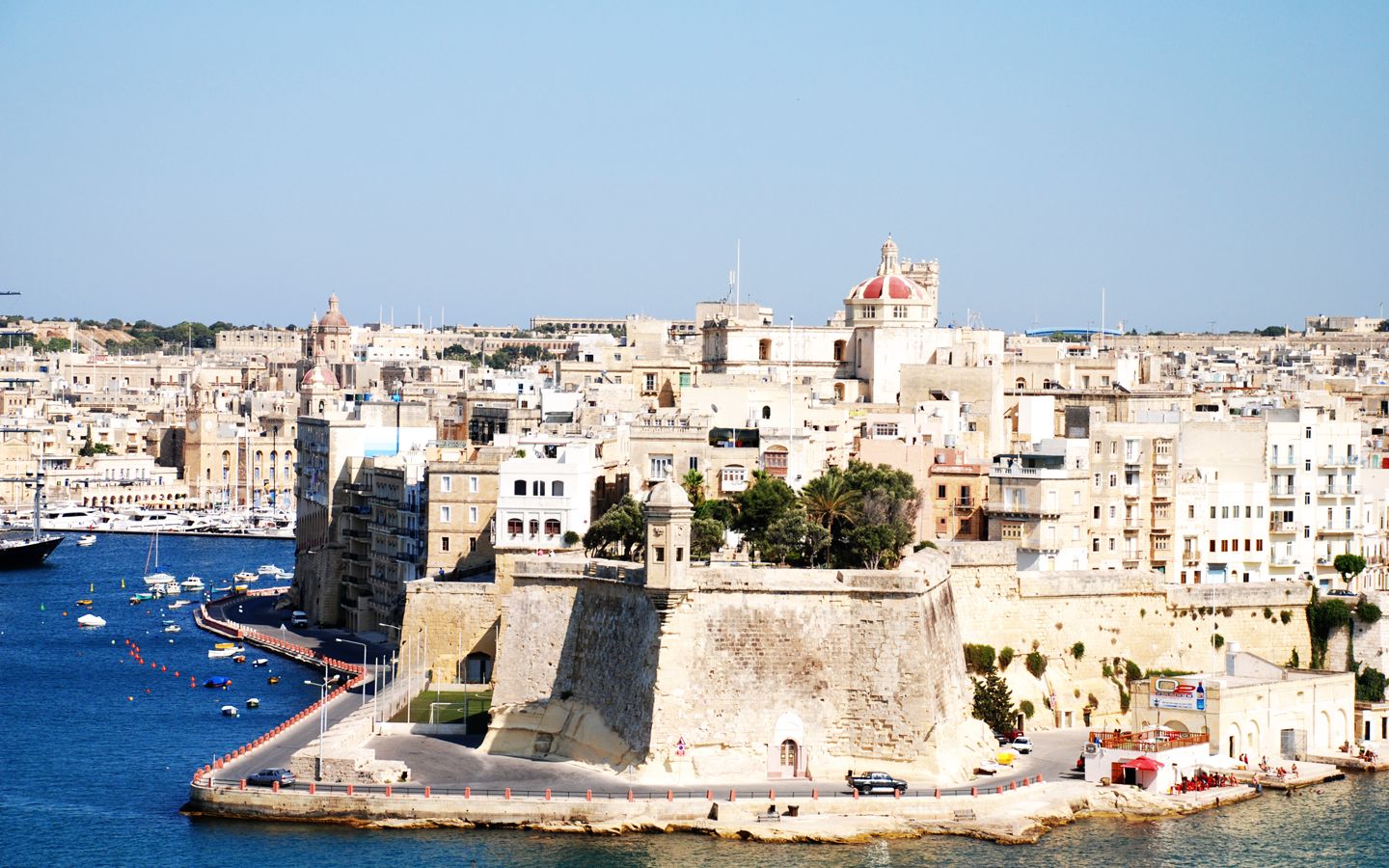
马耳他共和国(马耳他语:Repubblika ta' Malta,英语:Republic of Malta),通称马耳他,位于南欧的共和制的一个微型国家,首都瓦莱塔。是一个位于地中海中心的岛国, 由马耳他岛、戈佐岛、科米诺岛等几个岛屿组成。其中科米诺岛为鸟类保护区和自然保护区。素有“地中海心脏”之称,誉为“欧洲后花园”。官方语言为马耳他语和英语。国内教学基本以英语为主。马耳他亦是英联邦、欧盟成员国、申根区国家。 马耳他首都瓦莱塔是2018年欧洲文化中心。 马耳他经济以服务业和金融业为主,旅游业是马耳他主要的外汇来源。另外,马耳他社会保障体系较为完备,实行免费教育,免费医疗及退休保险制。这里也是多部如《特洛伊:木马屠城》、《神鬼战士》、《海边》、《大力水手》、《权力的游戏》等多部电影、电视剧的取景地。
Die Republik Malta (maltesisch Repubblika ta’ Malta, englisch Republic of Malta) ist ein südeuropäischer Inselstaat im Mittelmeer.
Die Republik Malta besteht aus den drei bewohnten Inseln Malta (einschließlich der Kleinstinsel Manoel), etwa 246 Quadratkilometer, Gozo (maltesisch: Għawdex), etwa 67 Quadratkilometer und Comino (maltesisch Kemmuna, etwa drei Quadratkilometer) sowie aus den unbewohnten Kleinstinseln Cominotto (maltesisch Kemmunett), Filfla, St. Paul’s Islands und Fungus Rock. Politisch gliedert sich die Hauptinsel Malta in zwei Regionen mit fünf Bezirken. Gozo und Comino bilden zusammen die dritte Region und den sechsten Bezirk. Bei den Römern hieß die jetzige Stadt Mdina melita – dieser Name geht wahrscheinlich auf die punische Bezeichnung für einen Zufluchtsort malet zurück –, was der Ursprung des heutigen Namens der Insel sein dürfte.
Mit rund 500.000 Einwohnern (2019) auf 316 Quadratkilometern Fläche gilt Malta als der Staat mit der fünfthöchsten Bevölkerungsdichte weltweit. Der Großteil der Bevölkerung konzentriert sich auf die Hauptstadtregion um Valletta, in dessen Ballungsraum rund 394.000 Einwohner leben.[4]
Im späten Neolithikum wurden auf dem Archipel bedeutende Megalithtempel errichtet, deren Überreste zum UNESCO-Welterbe zählen. Die maltesische Kultur wurde geprägt von den mediterranen Großreichen, etwa der Karthager, Römer, Byzantiner und Araber, zu denen die Inselgruppe in der Antike und dem Mittelalter gehörte; in Religion und Brauchtum ist sie vor allem vom römisch-katholischen Süditalien beeinflusst, sprachlich vom Arabischen. Eine eigenständige Entwicklung erfuhr sie ab 1530 unter der Herrschaft des souveränen Malteserordens. Ab 1814 britische Kolonie, erlangte Malta am 21. September 1964 die Unabhängigkeit. Am 1. Mai 2004 trat das Land der Europäischen Union bei, deren kleinster Mitgliedsstaat es seither ist.
Die Amtssprachen des Landes sind Maltesisch und Englisch; die Muttersprache der Malteser ist in der Regel das Maltesische, das auch als Nationalsprache Maltas gilt.
Am 1. Januar 2008 führte Malta den Euro ein. Vom 1. Januar bis zum 30. Juni 2017 hatte Malta erstmals die EU-Ratspräsidentschaft inne, 2018 war Valletta gemeinsam mit Leeuwarden (NL) Kulturhauptstadt Europas.
マルタ共和国(マルタきょうわこく、マルタ語: Repubblika ta' Malta、英語:Republic of Malta)、通称マルタ(Malta)は、南ヨーロッパの共和制国家。イギリス連邦および欧州連合(EU)の加盟国でもあり、公用語はマルタ語と英語、通貨はユーロ、首都はバレッタである。地中海中心部の小さな島国で、人口は約40万人。いわゆるミニ国家の一つ。
イタリアのシチリア島の南に位置し、面積は316km2で、東京23区の面積622.99km2の約半分の大きさである。
地中海のほぼ中央にあり、アフリカ大陸にも近い。このためカルタゴ、共和政ローマ時代に既に地中海貿易で繁栄し、その後一時イスラム帝国の支配に入ったこともある。それに抵抗して戦ったマルタ騎士団がこの地の名前を有名にした。小型犬のマルチーズの発祥の地であり、マルチーズの名はマルタに由来する。
Malta (/ˈmɒltə/,[11] /ˈmɔːltə/ (![]() listen); Maltese: [ˈmɐltɐ]), officially known as the Republic of Malta (Maltese: Repubblika ta' Malta), is a Southern European island country consisting of an archipelago in the Mediterranean Sea.[12] It lies 80 km (50 mi) south of Italy, 284 km (176 mi) east of Tunisia,[13] and 333 km (207 mi) north of Libya.[14] With a population of about 475,000[4] over an area of 316 km2 (122 sq mi),[3] Malta is the world's tenth smallest country in area[15][16] and fifth most densely populated sovereign country. Its capital is Valletta, which is the smallest national capital in the European Union by area at 0.8 km2 (0.31 sq mi). The official and national language is Maltese, which is descended from Sicilian Arabic that developed during the Emirate of Sicily, while English serves as the second official language.
listen); Maltese: [ˈmɐltɐ]), officially known as the Republic of Malta (Maltese: Repubblika ta' Malta), is a Southern European island country consisting of an archipelago in the Mediterranean Sea.[12] It lies 80 km (50 mi) south of Italy, 284 km (176 mi) east of Tunisia,[13] and 333 km (207 mi) north of Libya.[14] With a population of about 475,000[4] over an area of 316 km2 (122 sq mi),[3] Malta is the world's tenth smallest country in area[15][16] and fifth most densely populated sovereign country. Its capital is Valletta, which is the smallest national capital in the European Union by area at 0.8 km2 (0.31 sq mi). The official and national language is Maltese, which is descended from Sicilian Arabic that developed during the Emirate of Sicily, while English serves as the second official language.
Malta has been inhabited since approximately 5900 BC.[17] Its location in the centre of the Mediterranean[18] has historically given it great strategic importance as a naval base, with a succession of powers having contested and ruled the islands, including the Phoenicians and Carthaginians, Romans, Greeks, Arabs, Normans, Aragonese, Knights of St. John, French, and British.[19] Most of these foreign influences have left some sort of mark on the country's ancient culture.
Malta became a British colony in 1813, serving as a way station for ships and the headquarters for the British Mediterranean Fleet. It was besieged by the Axis powers during World War II and was an important Allied base for operations in North Africa and the Mediterranean.[20][21] The British Parliament passed the Malta Independence Act in 1964, giving Malta independence from the United Kingdom as the State of Malta, with Queen Elizabeth II as its head of state and queen.[22] The country became a republic in 1974. It has been a member state of the Commonwealth of Nations and the United Nations since independence, and joined the European Union in 2004; it became part of the eurozone monetary union in 2008.
Malta has had Christians since the time of Early Christianity, though was predominantly Muslim while under Arab rule, who tolerated Christians. Norman rulers expelled all Muslims who did not convert, and Aragonese rulers expelled unconverted Jews. Today, Catholicism is the state religion, but the Constitution of Malta guarantees freedom of conscience and religious worship.[23][24]
Malta is a popular tourist destination with its warm climate, numerous recreational areas, and architectural and historical monuments, including three UNESCO World Heritage Sites: Hypogeum of Ħal Saflieni,[25] Valletta,[26] and seven megalithic temples which are some of the oldest free-standing structures in the world.[27][28][29]
Malte (en maltais : Malta ; en anglais : Malta), en forme longue la République de Malte (en maltais : Repubblika ta' Malta ; en anglais : Republic of Malta), est un État insulaire d'Europe situé au milieu de la Méditerranée, à 93 kilomètres au sud de la Sicile. Il est constitué d'un archipel de huit îles, dont quatre sont habitées, et de plusieurs îlots et rochers. La capitale du pays est La Valette, établie sur l'île de Malte.
Sa localisation stratégique entre la Méditerranée occidentale et la Méditerranée orientale lui a valu les convoitises et l'occupation de nombreuses puissances au cours des âges. Malte a acquis son indépendance du Royaume-Uni le 21 septembre 1964. Elle est membre de l’Union européenne depuis le 1er mai 20045, ainsi que de la zone euro depuis le 1er janvier 20086.
Avec ses 316 km2 de superficie, c'est le plus petit État de l'Union européenne. Le pays compte 449 043 habitants en 2018. Sa densité de population est la plus élevée de l'Union européenne, avec 1 421 habitants au km2.
Malte possède une langue nationale, le maltais, et deux langues officielles, le maltais et l'anglais ; l'italien est également compris et pratiqué par de nombreux Maltais.
Malta, ufficialmente Repubblica di Malta (in maltese Repubblika ta' Malta, in inglese Republic of Malta), è uno stato insulare dell'Europa meridionale, nonché lo Stato membro più piccolo dell'Unione europea.
È un arcipelago situato nel Mediterraneo, nel canale di Malta, a 80 km dalla Sicilia, a 284 km dalla Tunisia e a 333 km dalla Libia, compreso nella regione geografica italiana. Con un'estensione di 315,6 km² è uno degli stati più piccoli e densamente popolati al mondo. La sua capitale è La Valletta e la città più abitata è Birchircara. L'isola principale è caratterizzata da un grande numero di cittadine che, insieme con la capitale, formano una conurbazione di 368 250 abitanti.
Il Paese ha due lingue ufficiali, il maltese e l'inglese. L'italiano, lingua ufficiale fino al 1934, è molto diffuso, parlato correttamente da più del 66% dei maltesi.[5] Durante il corso della storia, la posizione geografica di Malta ha dato grande importanza all'arcipelago, che ha subito l'avvicendarsi in sequenza di Fenici, Greci, Cartaginesi, Romani, Arabi, Normanni, Aragonesi, Cavalieri di Malta, Francesi e Inglesi.
Malta è internazionalmente conosciuta come località turistica, per lo svago e soprattutto per la cultura, dato che nel Paese si trovano ben tre siti dichiarati dall'UNESCO patrimonio dell'umanità: la capitale La Valletta, l'Ipogeo di Hal Saflieni e i templi megalitici. L'ingresso nell'Unione europea è avvenuto il 1º maggio 2004 e dal 1º gennaio 2008 è entrata a far parte dell'Eurozona. Malta è inoltre membro del Commonwealth.
Malta, oficialmente la República de Malta (en maltés: Repubblika ta' Malta; en inglés: Republic of Malta), es un país insular miembro de la Unión Europea, densamente poblado, compuesto por un archipiélago y situado en el centro del Mediterráneo, al sur de Italia, al oriente de Túnez y al norte de Libia. Debido a su situación estratégica, ha sido gobernado y disputado por diversas potencias en el transcurso de los siglos. Desde 1964 es independiente y en 2004 se adhirió a la Unión Europea.3
Malta es un popular destino turístico con su clima cálido, numerosas áreas recreativas y monumentos arquitectónicos e históricos, incluidos tres sitios del Patrimonio Mundial de la UNESCO: el Hipogeo de Hal Saflieni, La Valeta, y siete templos megalíticos que son algunas de las estructuras independientes más antiguas en el mundo. En 2018 tenía una población de 475 700 habitantes con una distribución de 1457 hab./km², la más alta densidad de población entre los países de la Unión Europea.
Ма́льта (мальт. и англ. Malta), Респу́блика Ма́льта (мальт. Repubblika ta' Malta, англ. Republic of Malta) — островное государство в Средиземном море, на Мальтийском архипелаге.
1 мая 2004 года Мальта стала членом Европейского союза.

Die Republik Moldau (rumänisch Republica Moldova; kurz Moldau; auch Moldawien genannt) ist ein Binnenstaat in Südosteuropa. Er grenzt im Westen an den EU-Mitgliedstaat Rumänien. Im Norden, Osten und Süden wird die Republik Moldau vollständig von der Ukraine umschlossen, denn zwischen Moldau und dem Schwarzen Meer liegt die ukrainische Region Budschak, die von Bessarabien abgetrennt wurde.
Historisch gehörte das Territorium ab der Gründung des Fürstentums Moldau zu diesem Staat, ab 1812 zum Russischen Kaiserreich, nach dem Ersten Weltkrieg großteils zu Rumänien und ab 1940 zur Sowjetunion. Als eigenständiger Staat existiert die Republik Moldau seit 1991, als sich die Moldauische SSR während der Auflösung der Sowjetunion für unabhängig erklärte. Seit jener Zeit behindert der Transnistrien-Konflikt erheblich die politische Entwicklung des Staates;[7] der Staatsteil Transnistrien steht nicht unter Kontrolle der moldauischen Regierung. Moldau ist seit dem 23. Juni 2022 EU-Beitrittskandidat.
摩尔多瓦共和国(罗马尼亚语:Republica Moldova),通称摩尔多瓦(Moldova),是位于东欧的内陆国家,首都是基希讷乌。摩尔多瓦西邻罗马尼亚,北面、东面、南面毗邻乌克兰。今天的摩尔多瓦,大部分领土属于中世纪的摩尔达维亚公国。摩尔达维亚公国在14世纪立国后,自16世纪开始沦为奥斯曼帝国的保护国。19世纪,摩尔达维亚所位于的比萨拉比亚地区被割让给沙皇俄国,同时与摩尔多瓦具有同缘关系的罗马尼亚人组建罗马尼亚联合公国。20世纪俄国发生革命后,比萨拉比亚地区先是独立,后又并入罗马尼亚王国。1940年,罗马尼亚王国割了此地予苏联,苏联遂控制摩尔达维亚地区,组建摩尔达维亚苏维埃社会主义共和国,为苏联的第15个加盟共和国。1991年,摩尔多瓦宣布独立,成立今天的摩尔多瓦共和国。

北马其顿共和国(马其顿语:Република Северна Македонија,转写:Republika Severna Makedonija),通称北马其顿(马其顿语:Северна Македонија,转写:Severna Makedonija),是位于东南欧的巴尔干半岛南部的内陆国家,东临保加利亚,北临塞尔维亚,西临阿尔巴尼亚,南临希腊。首都与最大都市是斯科普里。原为南斯拉夫社会主义联邦共和国的成员国之一,1991年南斯拉夫解体后获得独立,当时国号为马其顿共和国(马其顿语:Република Македонија,转写:Republika Makedonija,通称马其顿或前南斯拉夫马其顿共和国),由于在“马其顿”名称的使用上与邻邦希腊长期存在争议,2019年2月12日起国号改为现名[3]。2020年3月27日,北马其顿加入北约,成为该组织第30个会员国。
Nordmazedonien (mazedonisch Северна Македонија Severna Makedonija, albanisch Maqedonia e Veriut; amtlich Republik Nordmazedonien, mazedonisch Република Северна Македонија Republika Severna Makedonija, albanisch Republika e Maqedonisë së Veriut; bis 2019: Republik Mazedonien) ist ein Binnenstaat in Südosteuropa. Er umfasst den nördlichen Teil der historischen Region Makedonien.
Seit dem 27. März 2020 ist Nordmazedonien Mitglied der NATO sowie bereits seit 2005 ein Beitrittskandidat der Europäischen Union (EU). Nordmazedonien hat eine der schwächsten Volkswirtschaften Europas und befindet sich in einem Transformationsprozess, sowohl wirtschaftlich als auch politisch. Das Land hat mit hohen Arbeitslosenzahlen und einer schwachen Infrastruktur sowie fehlenden Investitionen zu kämpfen.
Neben slawischen Mazedoniern, die etwa 64 % der Gesamtbevölkerung stellen, gibt es eine große Minderheit an Albanern (25 %). Auch kleinere Minderheiten von Türken (3,85 %), Roma (2,66 %), Serben (1,78 %), Bosniaken (0,84 %) und Aromunen/Meglenorumänen (0,48 %) sowie anderen Ethnien (1,04 %) sind vorhanden. Durch diese Situation gab und gibt es immer wieder ethnisch motivierte Konflikte, vor allem zwischen Mazedoniern und Albanern. Nach den bürgerkriegsähnlichen Zuständen 2001 und dem danach unterschriebenen Friedensvertrag hat sich die Gesamtlage im Land deutlich verbessert. Eine gesellschaftliche Gleichstellung aller Ethnien ist jedoch immer noch nicht erreicht.
北マケドニア共和国(きたマケドニアきょうわこく、マケドニア語: Република Северна Македонија、アルバニア語: Republika e Maqedonisë së Veriut)、通称北マケドニア(マケドニア語: Северна Македонија、アルバニア語: Maqedonia e Veriut)は、東ヨーロッパのバルカン半島に位置する共和国。前身はユーゴスラビア連邦の構成国の1つで、南はギリシャ、東はブルガリア、西はアルバニア、北はセルビアおよびコソボと、四方を外国に囲まれた内陸国である。
North Macedonia[c] (before 2019, Macedonia), officially the Republic of North Macedonia,[d] is a country in the Balkan Peninsula in Southeast Europe. It gained its independence in 1991 as one of the successor states of Yugoslavia. A landlocked country, North Macedonia has borders with Kosovo[e] to the northwest, Serbia to the northeast, Bulgaria to the east, Greece to the south, and Albania to the west.[8] It constitutes approximately the northern third of the larger geographical region of Macedonia. The capital and largest city, Skopje, is home to roughly a quarter of the country's 2.06 million inhabitants. The majority of the residents are ethnic Macedonians, a South Slavic people. Albanians form a significant minority at around 25%, followed by Turks, Romani, Serbs, Bosniaks, and Aromanians.
The history of the region dates back to antiquity, beginning with the kingdom of Paeonia, presumably a mixed Thraco-Illyrian polity.[9] In the late sixth century BC, the area was incorporated into the Persian Achaemenid Empire, then annexed by the kingdom of Macedonia in the fourth century BC. The Romans conquered the region in the second century BC and made it part of the much larger province of Macedonia. The area remained part of the Byzantine Empire, but was often raided and settled by Slavic tribes beginning in the sixth century of the Christian era. Following centuries of contention between the Bulgarian, Byzantine, and Serbian Empire, it was part of the Ottoman dominion from the mid-14th until the early 20th century, when, following the Balkan Wars of 1912 and 1913, the modern territory of North Macedonia came under Serbian rule.
During the First World War (1915–1918), it was ruled by Bulgaria, but after the end of the war it returned to being under Serbian rule as part of the newly formed Kingdom of Serbs, Croats and Slovenes. Later, during the Second World War (1941–1944), it was ruled by Bulgaria again, and in 1945 it was established as a constituent state of communist Yugoslavia, which it remained until its peaceful secession in 1991. The country became a member of the United Nations in April 1993, but as a result of a dispute with Greece over the name "Macedonia", it was admitted under the provisional description the former Yugoslav Republic of Macedonia[f] (abbreviated as FYR Macedonia and FYROM). In June 2018, Macedonia and Greece resolved the conflict with an agreement that the country should rename itself "Republic of North Macedonia". This renaming came into effect in February 2019.
A unitary parliamentary constitutional republic, North Macedonia is a member of the UN, NATO, Council of Europe, World Bank, OSCE, CEFTA, and the WTO. Since 2005, it has also been a candidate for joining the European Union. North Macedonia is an upper-middle-income country[12] and has undergone considerable economic reform since independence in developing an open economy. North Macedonia is a developing country, ranking 82nd on the Human Development Index, and provides a social security, universal health care system, and free primary and secondary education to its citizens.
La Macédoine du Nordb (en macédonien Северна Македонија, translitterré Severna Makedonija ; en albanais Maqedonia e Veriut), en forme longue la république de Macédoine du Nord (en macédonien Република Северна Македонија, translitterré Republika Severna Makedonija ; en albanais Republika e Maqedonisë së Veriut), est un pays d'Europe du Sud situé dans la péninsule des Balkans.
Connue de 1991 à 2019 sous le nom de « république de Macédoine » ou « ancienne république yougoslave de Macédoine » (ou par le sigle ARYM)b, ou parfois simplement « Macédoine » dans le langage courant, elle est l'un des États successeurs de la Yougoslavie, dont elle a déclaré son indépendance en 1991. Par le nom très ressemblant entre la Macédoine du Nord et la région grecque de la Macédoine, des tensions éclatent, jusqu'à une sortie de crise le 12 février 2019, où l'accord entre la nouvelle République de Macédoine du Nord et la République hellénique (qui a été validé par référendum puis ratification par les deux parlements9) entre en vigueur, et donne son nouveau nom à cet État. Ce changement de nom va ainsi lui permettre de prétendre à l'adhésion aux institutions internationales, comme l'OTAN ou l'Union européenne.
Sans accès à la mer, la Macédoine du Nord partage des frontières avec la Grèce, la Bulgarie, la Serbie, le Kosovoc et l'Albanie. Le pays, qui compte deux millions d'habitants, occupe approximativement la moitié nord de la Macédoine géographique, qui s'étend aussi en Bulgarie et en Grèce. Sa capitale et plus grande ville est Skopje, suivie par Koumanovo, Bitola, Prilep et Tetovo. Le pays est principalement montagneux et compte une cinquantaine de lacs.
Par sa position en Europe, le territoire de la république a connu de nombreuses occupations et migrations, les plus marquantes étant l'âge byzantin, l'arrivée des Slaves au VIe siècle, puis une domination ottomane longue de cinq siècles. Ces présences ont façonné une culture riche en influences, puisqu'en plus de citoyens appartenant au peuple macédonien, le pays compte d'importantes minorités albanaise, turque et rom. La Macédoine du Nord compte une majorité d'habitants chrétiens orthodoxes, mais aussi une forte communauté musulmane.
La Macédoine du Nord possède un régime politique démocratique et parlementaire. Longtemps isolée après son indépendance, elle connaît une transition difficile à l'économie de marché. Elle se classe en effet parmi les États européens avec un indice de développement humain des plus bas. L'adhésion du pays à l'Union européenne a été définie comme la principale priorité stratégique par le gouvernement macédonien en 200611. Les négociations d'adhésion ont formellement été ouvertes par le Conseil européen le 26 mars 202012.
Elle est membre de l'Organisation des Nations Unies, du Conseil de l'Europe et de l'Organisation du Traité de l'Atlantique Nord depuis peu (27 mars 20207).
La Macedonia del Nord, ufficialmente Repubblica della Macedonia del Nord (in macedone: Република Северна Македонија?, traslitterato: Republika Severna Makedonija; in albanese: Republika e Maqedonisë së Veriut), è uno Stato della penisola balcanica nell'Europa sud-orientale.
Fino al 2019 lo Stato si chiamava Repubblica di Macedonia ed è stato coinvolto in un'annosa disputa sul proprio nome con la Grecia; in base all'accordo di Prespa del giugno del 2018, nonostante il mancato raggiungimento del quorum nel referendum consultivo del 30 settembre, il parlamento macedone ha approvato nel gennaio del 2019 una modifica costituzionale per adottare il nome di Macedonia del Nord e poter così successivamente aderire con la nuova denominazione alla NATO e all'Unione europea.[7][8] Il cambio del nome è poi divenuto effettivo il successivo 12 febbraio.[9] Dal 27 marzo 2020 lo Stato fa quindi parte della NATO.
Da alcuni stati, tra cui quelli dell'Unione europea, nonché dall'Unione medesima e da altre entità sovranazionali, era riconosciuta come Ex Repubblica Jugoslava di Macedonia[10] (abbreviato ERJM o ERIM;[11] in inglese Former Yugoslav Republic of Macedonia, FYROM; in macedone Πоранешна Југословенска Република Македонија, Poranešna Jugoslovenska Republika Makedonija) a seguito dell'adesione del Paese all'ONU (1993) con tale "denominazione provvisoria".[12]
Stato senza sbocco al mare, la Macedonia del Nord confina a sud-ovest con l'Albania, a nord-est con la Bulgaria, a nord con la Serbia e il Kosovo e a sud-est con la Grecia. Il territorio governato dalla Macedonia era in precedenza la parte meridionale estrema della Jugoslavia. I confini odierni vennero fissati poco dopo la seconda guerra mondiale, quando la Jugoslavia socialista stabilì nella zona la Repubblica Popolare di Macedonia, riconoscendo i macedoni come una nazione separata all'interno della Jugoslavia. Rinominatasi Repubblica di Macedonia l'8 settembre 1991, si separò pacificamente dalla Jugoslavia senza ulteriori modificazioni territoriali.
Dal 2001 la Macedonia è una democrazia parlamentare (vedi Cristianesimo democratico e Movimenti liberali nell'Islam).
Macedonia del Norte (en macedonio: Северна Македонија, romanización: Severna Makedóniya), oficialmente República de Macedonia del Norte (en macedonio: Република Северна Македонија, romanización: Repúblika Severna Makedóniya), y hasta febrero de 2019 llamado la ex República Yugoslava de Macedonia7 o más adecuadamente Antigua República Yugoslava de Macedonia,8 es un país independiente sin litoral, situado en la península balcánica, en el sureste de Europa. Limita al norte con Serbia y Kosovo,Nota 2 al este con Bulgaria, al sur con Grecia y al oeste con Albania. Su capital es Skopie, con más de 700 000 habitantes.
Este país surgió en 1991 después de que la antigua República Socialista de Macedonia, una de las partes constituyentes de la República Federal Socialista de Yugoslavia, declarara su independencia con el nombre de «República de Macedonia» (Република Македонија, República Makedóniya),Nota 3 y con el nombre corto de «Macedonia», en algunos casos. El uso del término «Macedonia» fue rechazado por Grecia, y surgió una disputa sobre la denominación de este país entre ambos estados. Como postura intermedia, en 1993 se adoptó la referencia provisional «Antigua República Yugoslava de Macedonia»11 (Поранешна Југословенска Република Македонија, Poranešna Jugoslovenska Republika Makedonija, en macedonio) para denominar al Estado macedonio en algunas organizaciones internacionales, como en la Organización de las Naciones Unidas. El conflicto perduró hasta febrero de 2019, después de que ambas partes aceptaran el uso definitivo del nombre de «República de Macedonia del Norte».Nota 4
Се́верная Македо́ния (макед. Северна Македонија, алб. Maqedonia e Veriut), полное официальное название — Респу́блика Се́верная Македо́ния (макед. Република Северна Македонија, алб. Republika e Maqedonisë së Veriut) — государство на юго-востоке Европы, на Балканском полуострове. Население, по данным Государственного статистического управления Республики Северная Македония, составляет 2 073 702 человека, территория — 25 333 км². Занимает 145-е место в мире по численности населения и 145-е по территории.
Столица — Скопье. Единственным государственным языком является македонский. Албанский имеет статус «второго официального языка» (макед. втор официјален јазик), но не употребляется в сфере международных отношений, обороны, центральной полиции и монетарной политики.
Унитарное государство, парламентская республика. 3 января 2020 года пост премьер-министра занял Оливер Спасовский.
Подразделяется на 85 административно-территориальных единиц, 84 из которых являются общинами и город Скопье, как самостоятельную единицу местного самоуправления.
Не имеет выхода к морю. На севере граничит с частично признанной Республикой Косово[5] и Сербией, на западе — с Албанией, на юге — с Грецией, на востоке — с Болгарией.
Отличается значительным этнокультурным разнообразием. Около 67 % населения исповедует православие, мусульмане составляют 30 % от общего числа жителей, а приверженцев других конфессий — 3 %.
Аграрно-индустриальная страна с динамично развивающейся экономикой. Объём ВВП по паритету покупательной способности за 2017 год составил 31,03 миллиарда долларов США (около 14 900 долларов США на душу населения). Денежная единица — македонский денар. Член НАТО с 30 марта 2020[6].

 Geography
Geography

 Geography
Geography
 ***IMF Developed countries
***IMF Developed countries
 IMF Developed countries
IMF Developed countries
 IMF Developed countries
IMF Developed countries
 TOP5
TOP5
 Austria
Austria

 States of Europe
States of Europe
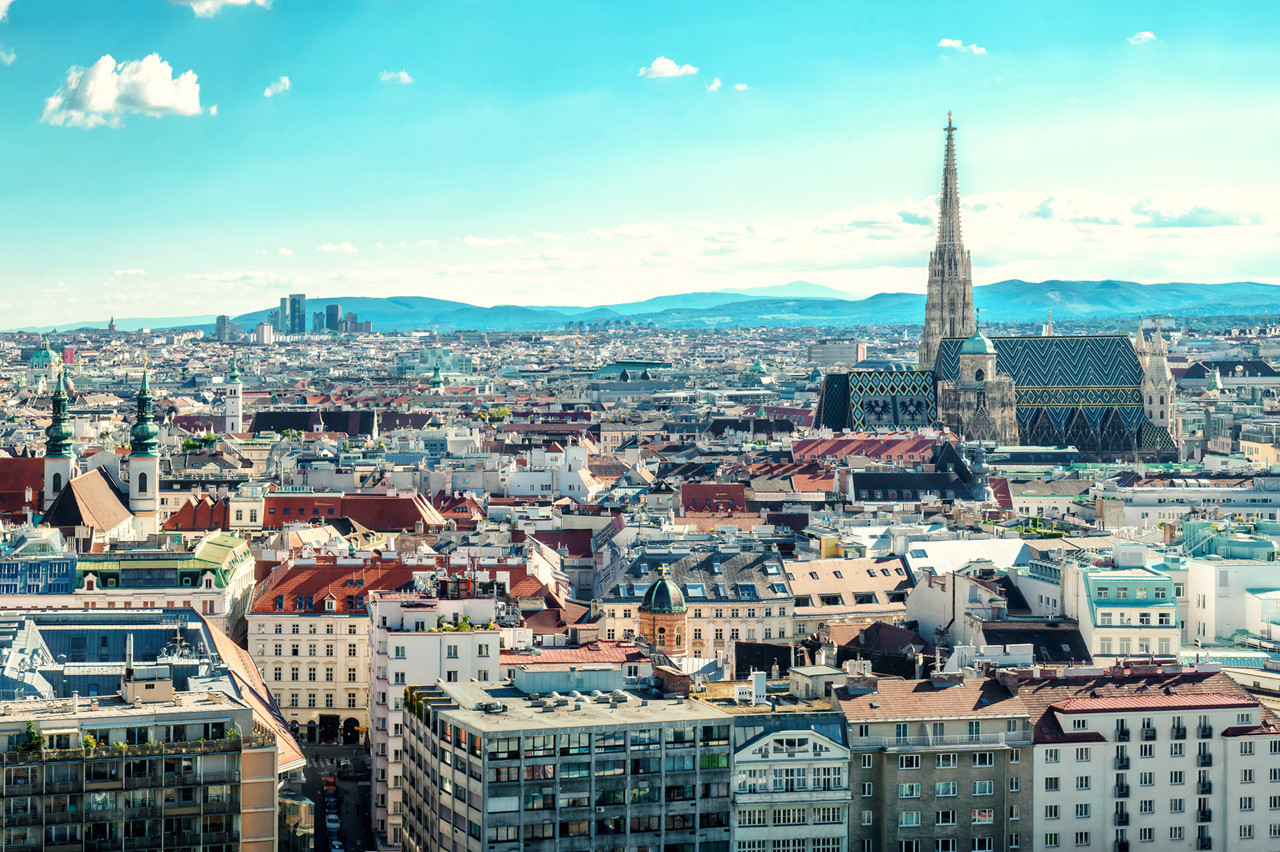
奥地利共和国(![]() Republik Österreich 帮助·信息),通称奥地利(德语:Österreich [ˈøːstɐˌʁaɪç]
Republik Österreich 帮助·信息),通称奥地利(德语:Österreich [ˈøːstɐˌʁaɪç] ![]() 聆听),是一个位于中欧的内陆国家,但在历史上也被分类成西欧或者东欧的主权国家。[注 1]奥地利与多国接壤,东面是匈牙利和斯洛伐克,南面是意大利和斯洛文尼亚,西面是列支敦士登和瑞士,北面是德国和捷克。首都兼最大城市是维也纳,人口超过170万。[7][8]国土面积83,855平方千米(32,377平方英里),同时由于阿尔卑斯山的存在,奥地利成为了一个山地国,只有32%的国土海拔低于500米(1,600英尺),最高点海拔3,798米(12,461英尺)。[7]
聆听),是一个位于中欧的内陆国家,但在历史上也被分类成西欧或者东欧的主权国家。[注 1]奥地利与多国接壤,东面是匈牙利和斯洛伐克,南面是意大利和斯洛文尼亚,西面是列支敦士登和瑞士,北面是德国和捷克。首都兼最大城市是维也纳,人口超过170万。[7][8]国土面积83,855平方千米(32,377平方英里),同时由于阿尔卑斯山的存在,奥地利成为了一个山地国,只有32%的国土海拔低于500米(1,600英尺),最高点海拔3,798米(12,461英尺)。[7]
如今的奥地利是一个半总统制的代议民主国家,下含九个联邦州。[7][9]奥地利是当今世界最富裕的国家之一,2012年的人均国民生产总值达到46,330美元。其人类发展指数在2014年排世界第21位。同时自1995年以来就是欧盟成员,[7][10]是OECD的创始国之一。[11]1995年签订申根公约,[12]1999年接受并于2002年起使用欧元。奥地利曾是统治中欧650年到1918年哈布斯堡王朝的核心部分,维也纳是神圣罗马帝国和奥匈帝国的首都,并且奥地利在民族上属于日耳曼民族的居住地,和德国、瑞士、卢森堡同为德语区,在历史上和中欧及东欧的的匈牙利、捷克、波兰都有紧密的关联。
Österreich (amtlich Republik Österreich) ist ein mitteleuropäischer Binnenstaat mit rund 8,9 Millionen Einwohnern. Die angrenzenden Staaten sind Deutschland und Tschechien im Norden, Slowenien und Italien im Süden, die Slowakei und Ungarn im Osten sowie die Schweiz und Liechtenstein im Westen.
Österreich ist ein demokratischer und föderaler Bundesstaat, im Besonderen eine semipräsidentielle Republik. Seine großteils aus den historischen Kronländern hervorgegangenen neun Bundesländer sind das Burgenland, Kärnten, Niederösterreich, Oberösterreich, Salzburg, die Steiermark, Tirol, Vorarlberg und Wien. Das Bundesland Wien ist zugleich Bundeshauptstadt und einwohnerstärkste Stadt des Landes. Weitere Bevölkerungszentren sind Graz, Linz, Salzburg und Innsbruck.
Das Land wird von der Böhmischen Masse und der Thaya im Norden, den Karawanken und dem Steirischen Hügelland im Süden, der Pannonischen Tiefebene im Osten und dem Rhein und dem Bodensee im Westen begrenzt. Mehr als 62 Prozent seiner Staatsfläche werden von alpinem Hochgebirge gebildet.
Die Bezeichnung Österreich ist in ihrer althochdeutschen Form Ostarrichi erstmals aus dem Jahr 996 überliefert. Zudem war die lateinische Form Austria in Verwendung. Ursprünglich eine Grenzmark des Stammesherzogtums Baiern, wurde Österreich 1156 ein im Heiligen Römischen Reich eigenständiges Herzogtum. Nach dem Aussterben des Geschlechts der Babenberger 1246 setzte sich das Haus Habsburg im Kampf um die Herrschaft in Österreich durch. Das als Österreich bezeichnete Gebiet umfasste später die gesamte Habsburgermonarchie sowie später das 1804 konstituierte Kaisertum Österreich und die österreichische Reichshälfte der 1867 errichteten Doppelmonarchie Österreich-Ungarn.
Die heutige Republik entstand ab 1918, nach dem für Österreich-Ungarn verlorenen Ersten Weltkrieg, aus den zunächst Deutschösterreich genannten deutschsprachigen Teilen der früheren Monarchie. Mit dem Vertrag von Saint-Germain wurden die Staatsgrenze und der Name Republik Österreich festgelegt. Damit einher ging der Verlust Südtirols. Die Erste Republik war von innenpolitischen Spannungen geprägt, die in einen Bürgerkrieg und die Ständestaatsdiktatur mündeten. Durch den sogenannten „Anschluss“ stand das Land ab 1938 unter nationalsozialistischer Herrschaft. Nach der Niederlage des Deutschen Reiches im Zweiten Weltkrieg wieder ein eigenständiger Staat, erklärte Österreich am Ende der alliierten Besatzung 1955 seine immerwährende Neutralität und trat den Vereinten Nationen bei. Österreich ist seit 1956 Mitglied im Europarat, Gründungsmitglied der 1961 errichteten Organisation für wirtschaftliche Zusammenarbeit und Entwicklung (OECD) und seit 1995 ein Mitgliedsstaat der Europäischen Union.
オーストリア共和国(オーストリアきょうわこく、ドイツ語: Republik Österreich、バイエルン語: Republik Östareich)、通称オーストリアは、ヨーロッパに位置する連邦共和制国家。首都はウィーン。
ドイツの南方、中部ヨーロッパの内陸に位置し、西側はリヒテンシュタイン、スイスと、南はイタリアとスロベニア、東はハンガリーとスロバキア、北はドイツとチェコと隣接する。基本的には中欧とされるが、歴史的には西欧や東欧に分類されたこともある。
中欧に650年間ハプスブルク家の帝国として君臨し、第一次世界大戦まではイギリス、ドイツ、フランス、ロシアと並ぶ欧州五大国(列強)の一角を占めていた。1918年、第一次世界大戦の敗戦と革命により1867年より続いたオーストリア=ハンガリー帝国が解体し、共和制(第一共和国)となった。この時点で多民族国家だった旧帝国のうち、かつての支配民族のドイツ人が多数を占める地域におおむね版図が絞られた。1938年には同じ民族の国家であるナチス・ドイツに併合されたが、ドイツ敗戦後の1945年から1955年には連合国軍による分割占領の時代を経て、1955年の独立回復と永世中立国化により現在に続く体制となった。
音楽を中心に文化大国としての歴史も有する。EU加盟以降は、同言語・同民族の国家同士でありながら複雑な国際関係が続いてきたドイツとの距離が再び縮まりつつあり、国内でも右派政党の伸張などドイツ民族主義の位置づけが問われている。
本項ではおもに1955年以降のオーストリア共和国に関して記述する。それ以前についてはオーストリアの歴史、ハプスブルク君主国、オーストリア公国、オーストリア大公国、オーストリア帝国、オーストリア=ハンガリー帝国、第一共和国 (オーストリア)、アンシュルス、連合軍軍政期 (オーストリア) を参照。
Austria (/ˈɒstriə/ (![]() listen), /ˈɔːs-/;[9] German: Österreich [ˈøːstɐʁaɪ̯ç] (
listen), /ˈɔːs-/;[9] German: Österreich [ˈøːstɐʁaɪ̯ç] (![]() listen)), officially the Republic of Austria (German: Republik Österreich,
listen)), officially the Republic of Austria (German: Republik Österreich, ![]() listen (help·info)), is a landlocked East Alpine country in the southern part of Central Europe. It is composed of nine federated states (Bundesländer), one of which is Vienna, Austria's capital and its largest city. It is bordered by Germany to the northwest, Czech Republic to the north, Slovakia to the northeast, Hungary to the east, Slovenia and Italy to the south, and Switzerland and Liechtenstein to the west. Austria occupies an area of 83,879 km2 (32,386 sq mi) and has a population of nearly 9 million people. While German is the country's official language,[10] many Austrians communicate informally in a variety of Bavarian dialects.[11]
listen (help·info)), is a landlocked East Alpine country in the southern part of Central Europe. It is composed of nine federated states (Bundesländer), one of which is Vienna, Austria's capital and its largest city. It is bordered by Germany to the northwest, Czech Republic to the north, Slovakia to the northeast, Hungary to the east, Slovenia and Italy to the south, and Switzerland and Liechtenstein to the west. Austria occupies an area of 83,879 km2 (32,386 sq mi) and has a population of nearly 9 million people. While German is the country's official language,[10] many Austrians communicate informally in a variety of Bavarian dialects.[11]
Austria initially emerged as a margraviate around 976 and developed into a duchy and archduchy. In the 16th century, Austria started serving as the heart of the Habsburg Monarchy and the junior branch of the House of Habsburg – one of the most influential royal dynasties in history. As an archduchy, it was a major component and administrative centre of the Holy Roman Empire. Early in the 19th century, Austria established its own empire, which became a great power and the leading force of the German Confederation but pursued its own course independently of the other German states. Following the Austro-Prussian War and the compromise with Hungary, the Dual Monarchy was established.
Austria was involved in World War I under Emperor Franz Joseph following the assassination of Archduke Ferdinand, the presumptive successor to the Austro-Hungarian throne. After the defeat and the dissolution of the Monarchy, the Republic of German-Austria was proclaimed with the intent of the union with Germany, which eventually failed because of the Allied Powers and the state remained unrecognized. In 1919 the First Austrian Republic became the legal successor of Austria. In 1938, the Austrian-born Adolf Hitler, who became the Chancellor of the German Reich, achieved the annexation of Austria by the Anschluss. Following the defeat of Nazi Germany in 1945 and an extended period of Allied occupation, Austria was re-established as a sovereign and self-governing democratic nation known as the Second Republic.
Austria is a parliamentary representative democracy with a directly elected Federal President as head of state and a Chancellor as head of the federal government. Major urban areas of Austria include Graz, Linz, Salzburg and Innsbruck. Austria is consistently ranked in the top 20 richest countries in the world by GDP per capita terms. The country has achieved a high standard of living and in 2018 was ranked 20th in the world for its Human Development Index. Vienna consistently ranks in the top internationally on quality-of-life indicators.[12]
The Second Republic declared its perpetual neutrality in foreign political affairs in 1955. Austria has been a member of the United Nations since 1955 and[13] joined the European Union in 1995.[14] It plays host to the OSCE and OPEC and is a founding member of the OECD and Interpol.[15] Austria also signed the Schengen Agreement in 1995,[16] and adopted the euro currency in 1999.[17]
L'Autriche (en allemand : Österreich Écouter), en forme longue la république d'Autriche (en allemand : Republik Österreich), est un État fédéral d'Europe centrale sans accès à la mer. Pays montagneux, il est entouré, dans le sens des aiguilles d'une montre, par l'Allemagne et la République tchèque au nord, la Slovaquie et la Hongrie à l'est, la Slovénie et l'Italie au sud, et par la Suisse et le Liechtenstein à l'ouest. L'Autriche est membre de l'Union européenne et de la zone euro respectivement depuis 1995 et 1999. Sa langue officielle est l'allemand, mais depuis la ratification de la Charte européenne des langues régionales ou minoritaires, six autres langues (hongrois, slovène, croate du Burgenland, tchèque, slovaque et romani) sont reconnues4. Sa capitale et plus grande ville est Vienne.
L'Autriche est l'un des États issus de la dislocation en 1918 de l'Autriche-Hongrie. Par le passé, elle a été un acteur majeur de l'histoire de l'Europe, au cœur de grandes entités politiques telles que le Saint-Empire romain germanique, la monarchie de Habsbourg, l'empire d'Autriche et la Confédération germanique. Les nombreuses épreuves temporelles qu'elle a vécu a fait de ce pays une grande puissance mondiale. Mais, depuis la fin de la Seconde Guerre mondiale, l'Autriche a adopté une politique de neutralité dans les relations internationales5.
L'Austria (in tedesco: Österreich, /ˈʔœstɐˌʀaɪ̯ç/; in austro-bavarese: Ésterreich), ufficialmente Repubblica d'Austria (in tedesco: Republik Österreich; /ʀepu'bli:k ˈʔœstɐˌʀaɪ̯ç/), è una repubblica federale composta da nove Länder[5], membro dell'Unione europea, situato nell'Europa centrale. Confina con Svizzera (Cantone dei Grigioni, Canton San Gallo) e Liechtenstein ad ovest, Slovenia a sud-est, Italia (Friuli-Venezia Giulia, Trentino-Alto Adige, Veneto) a sud, Ungheria a est, Slovacchia a nord-est, Germania (Baviera) e Repubblica Ceca a nord.
Stato senza sbocco sul mare, con capitale la città di Vienna posta sulle rive del fiume Danubio, le sue origini moderne risalgono al IX secolo, quando il territorio dell'Alta e della Bassa Austria divenne sempre più popolato. Il nome Ostarrichi è attestato per la prima volta in un documento ufficiale dal 996 di Ottone I. Da allora questa parola si evolse in Österreich.[6]
È una democrazia rappresentativa parlamentare (sebbene il presidente sia eletto direttamente dai cittadini) ed è uno dei sei paesi europei che hanno dichiarato la neutralità permanente[7], nonché tra i pochi paesi al mondo che include il concetto di neutralità eterna nella sua costituzione. È membro delle Nazioni Unite dal 1955[8] mentre l'ingresso nell'Unione europea è avvenuto il 1º gennaio 1995.
La denominación oficial de República de Austria (en alemán, Republik Österreich), refiere a un Estado centroeuropeo, miembro de la Unión Europea, con capital en Viena, con una población de 8,9 millones de habitantes.4
Limita con la República Checa y Alemania al norte, Eslovaquia y Hungría al este, Eslovenia e Italia al sur, y Suiza y Liechtenstein al oeste. No tiene salida al mar, aunque está atravesada en una parte significativa por el río Danubio, navegable en gran parte de su recorrido. El territorio abarca 83 871 km² de superficie1 y el clima predominante es el alpino. Solo el 32% del país está por debajo de los 500 metros de altitud, y el punto más alto es el pico Grossglockner con 3798 m.s.n.m.5 La mayoría habla alemán,6 idioma oficial, aunque se hablan otros idiomas oficiales en zonas concretas como el croata, el esloveno y el húngaro.
Sus orígenes se remontan a la dinastía de los Habsburgo que convirtió al país en una parte fundamental del Sacro Imperio Romano Germánico. En 1867, el Imperio austríaco se convirtió en el Imperio austro-húngaro. El Imperio de los Habsburgo terminó en 1918 al finalizar la Primera Guerra Mundial.
La Primera República de Austria se estableció en 1919. En 1938, mediante el proceso conocido como el Anschluss, el país fue ocupado por la Alemania Nazi, hasta el final de la Segunda Guerra Mundial, cuando Austria volvería a recuperar su independencia. En 1955, se creó la Segunda República de Austria.
Austria tiene un gobierno parlamentario con una democracia representativa compuesta por nueve estados.57 La mayor ciudad es su capital, Viena, con 1,79 millones de habitantes. Es uno de los países más ricos del mundo, con una renta per cápita, para 2014, de €38.500.8 El país tiene una de las tasas más altas de Índice de Desarrollo Humano y un desempleo del 9,1 en 2015. Ha sido miembro de las Naciones Unidas desde 1955 y de la Unión Europea desde 1995. Es miembro fundador de la OCDE. Su moneda es el euro, adoptado en 1999.
А́встрия (нем. Österreich, МФА (нем.): [ˈøːstɐˌʁaɪç] ![]() слушать), официальное название — Австри́йская Респу́блика (Republik Österreich) — государство в Центральной Европе. Население составляет 8,46 млн человек, территория — 83 879 км². Занимает 94-е место в мире по численности населения и 112-е по территории.
слушать), официальное название — Австри́йская Респу́блика (Republik Österreich) — государство в Центральной Европе. Население составляет 8,46 млн человек, территория — 83 879 км². Занимает 94-е место в мире по численности населения и 112-е по территории.
Столица — Вена. Государственный язык — немецкий.
Федеративное государство, парламентская республика. С 7 января 2020 года федеральным канцлером является Себастьян Курц.
Подразделяется на 9 федеральных земель: Бургенланд, Каринтия, Нижняя Австрия, Верхняя Австрия, Зальцбург, Тироль, Штирия, Форарльберг, Вена.
На севере граничит с Чехией (362 км), на северо-востоке — со Словакией (91 км), на востоке — с Венгрией (366 км), на юге — со Словенией (330 км) и Италией (430 км), на западе — с Лихтенштейном (35 км) и Швейцарией (164 км), на северо-западе — с Германией (784 км).
Около 74 % населения католики.
Индустриальная страна с динамично развивающейся экономикой. Объём ВВП по паритету покупательной способности за 2017 год составил 441 млрд долларов США (около 50 000 долларов на душу населения). Денежная единица — евро.
Член Организации Объединённых Наций, Европейского союза. В 1955 году провозгласила постоянный нейтралитет и неприсоединение к каким-либо военным блокам.
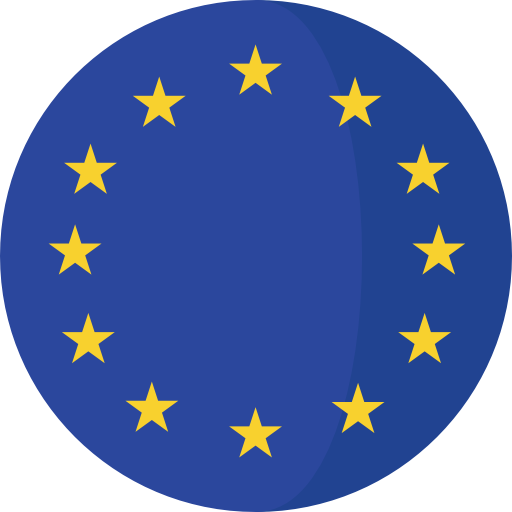 European Union
European Union
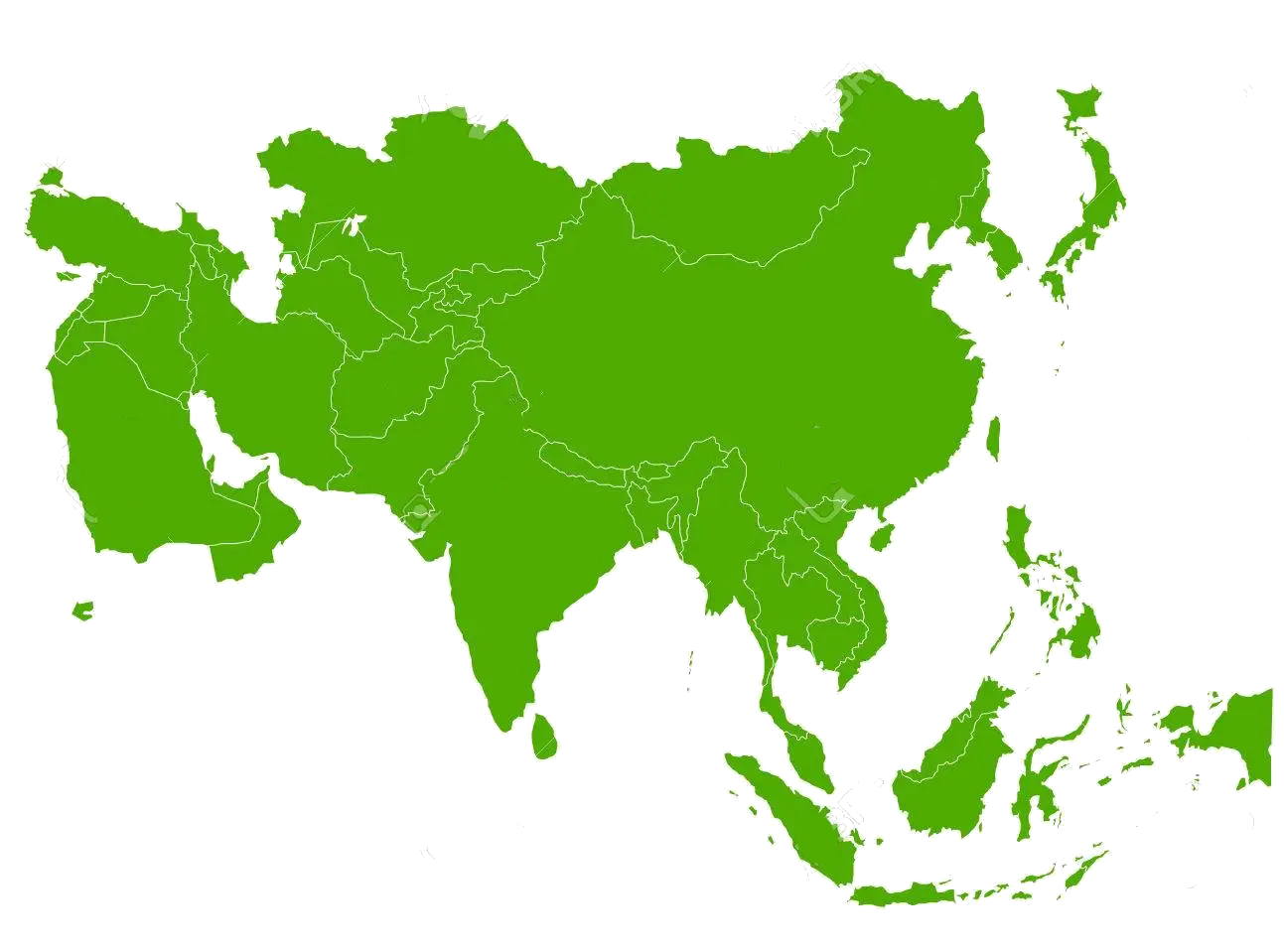 States of Asia
States of Asia

